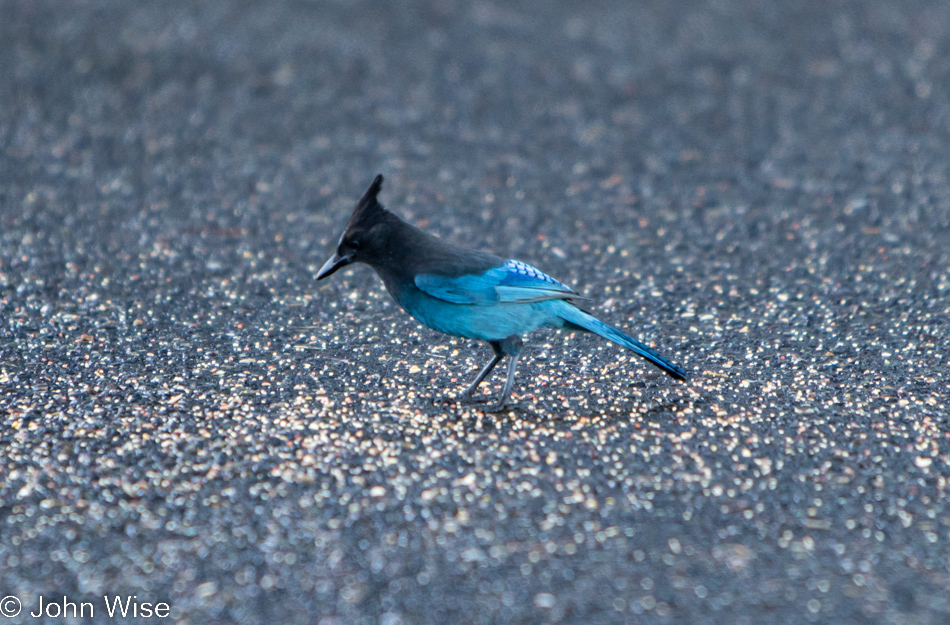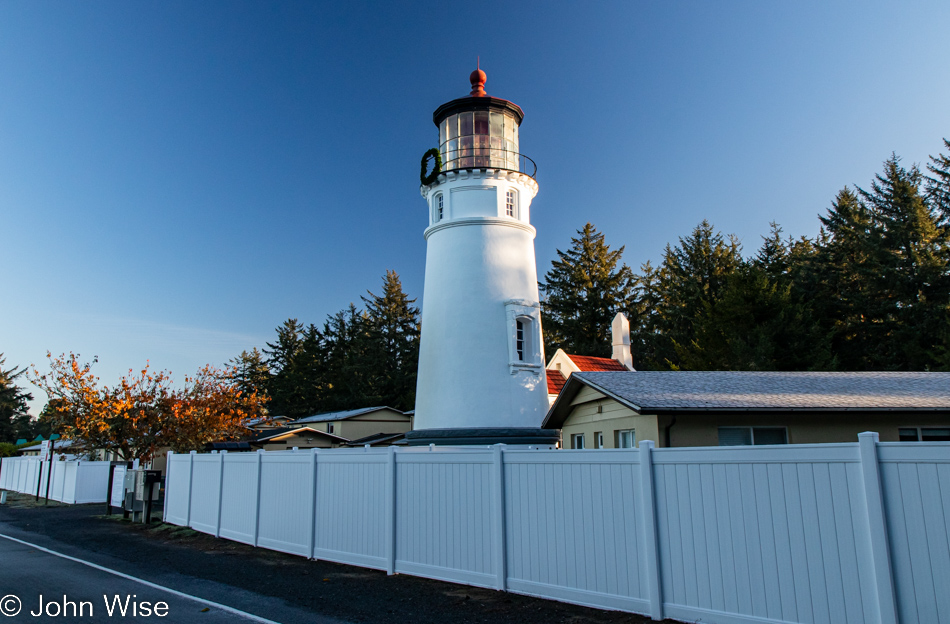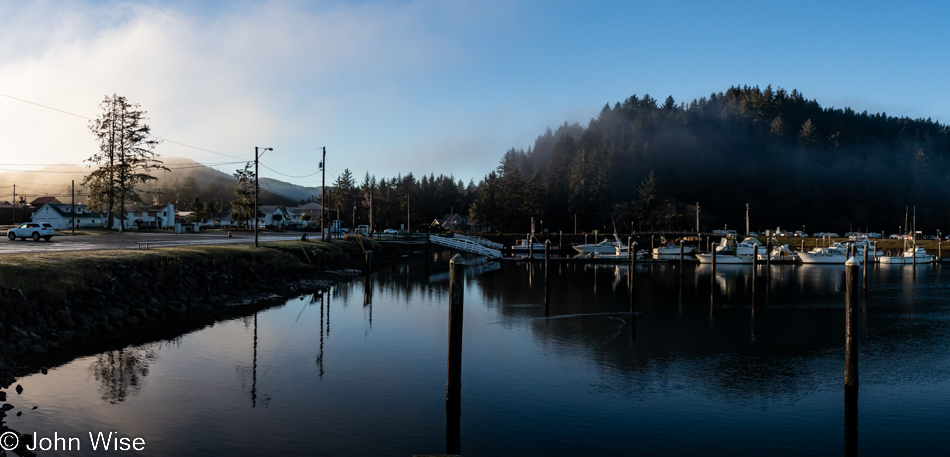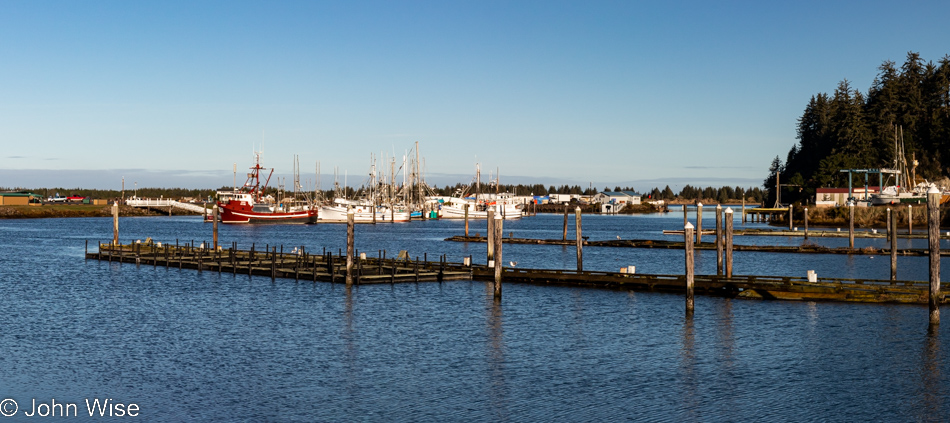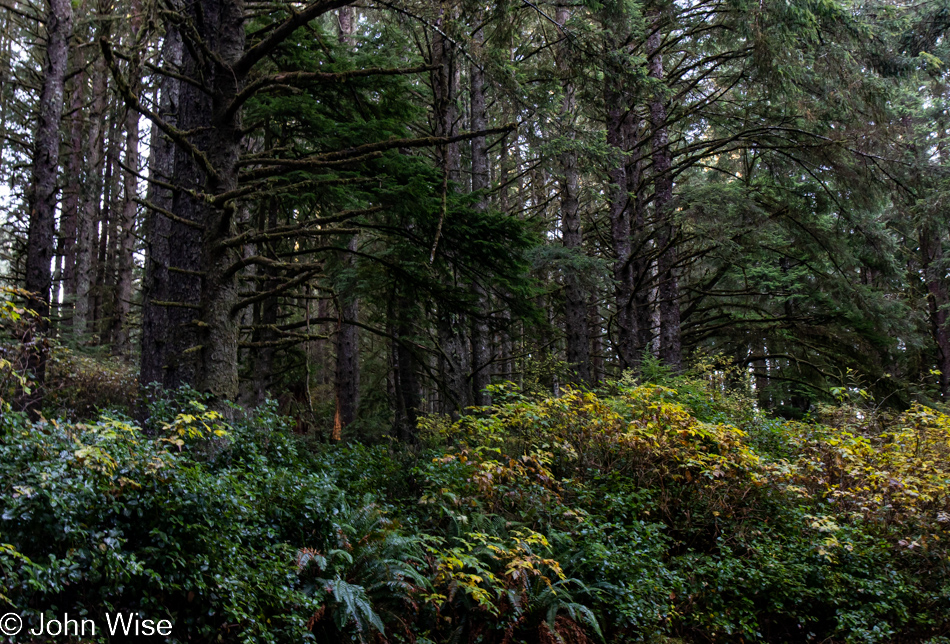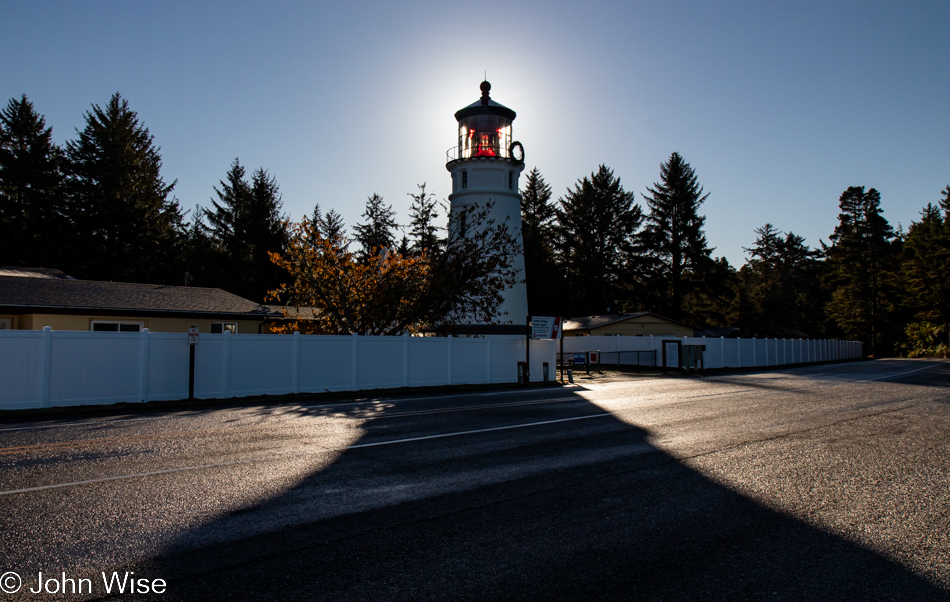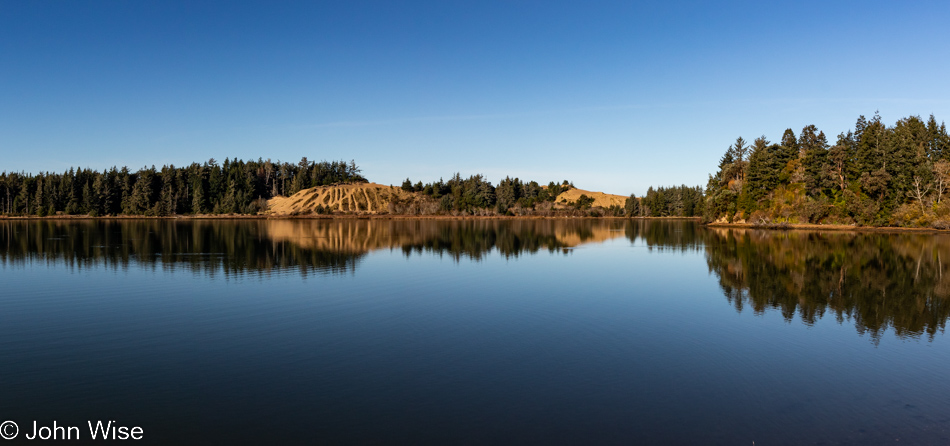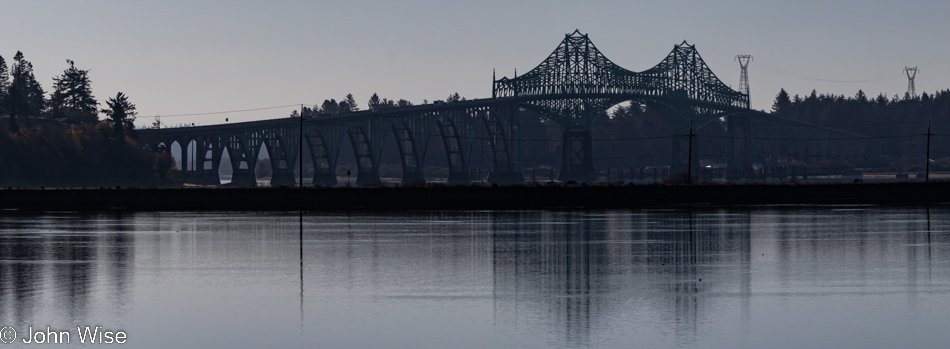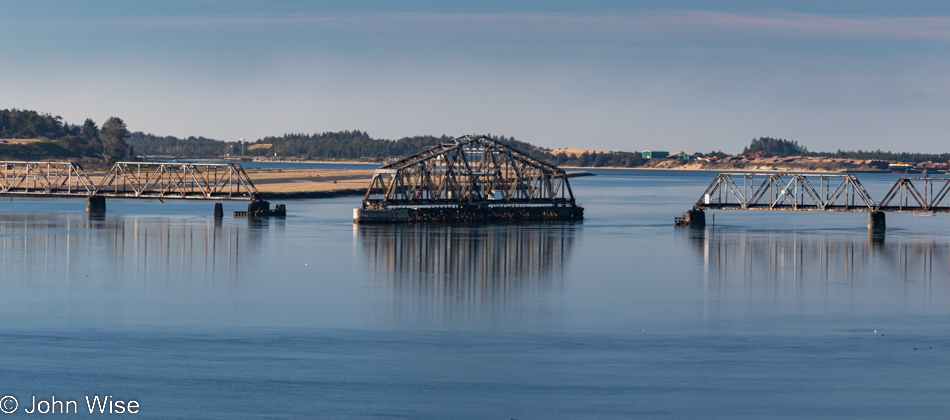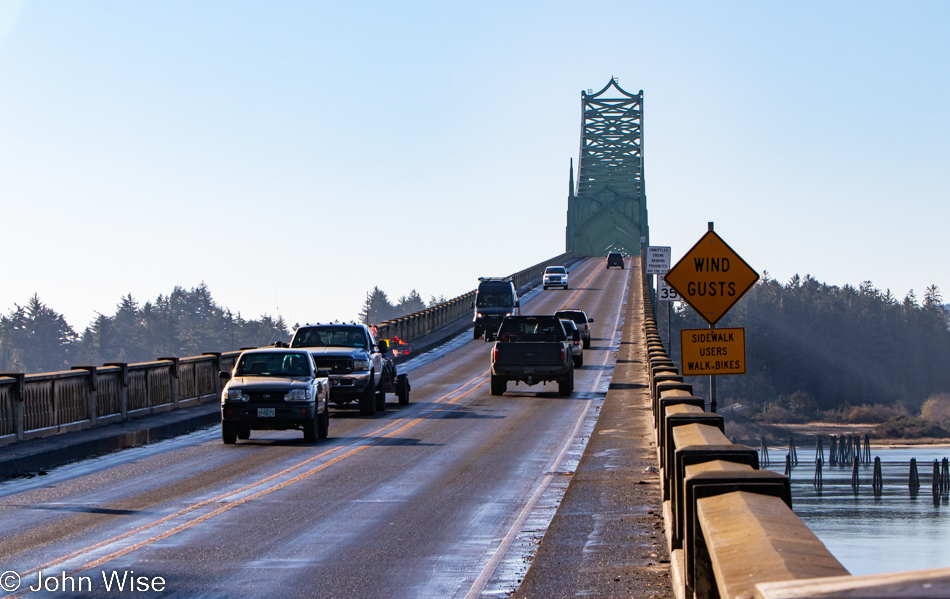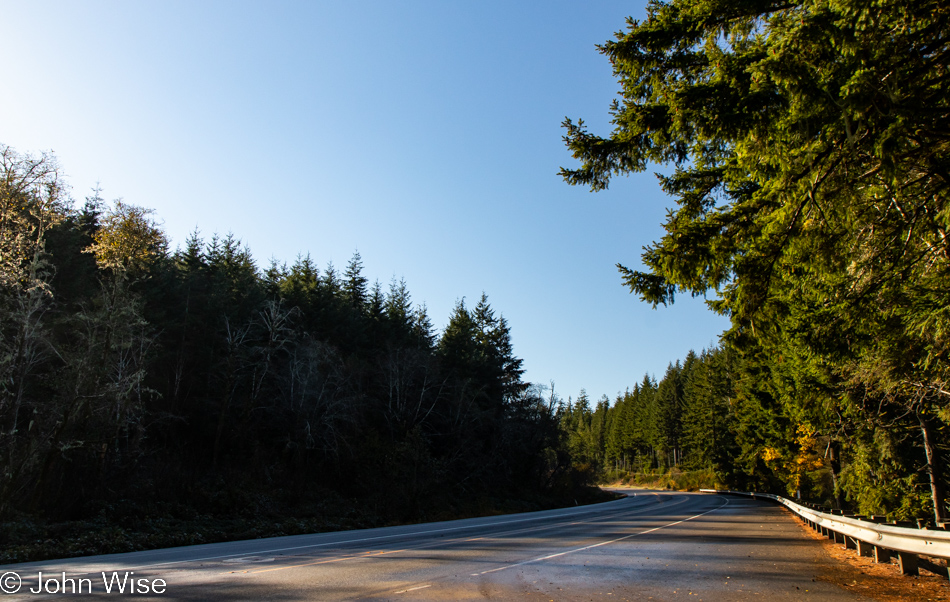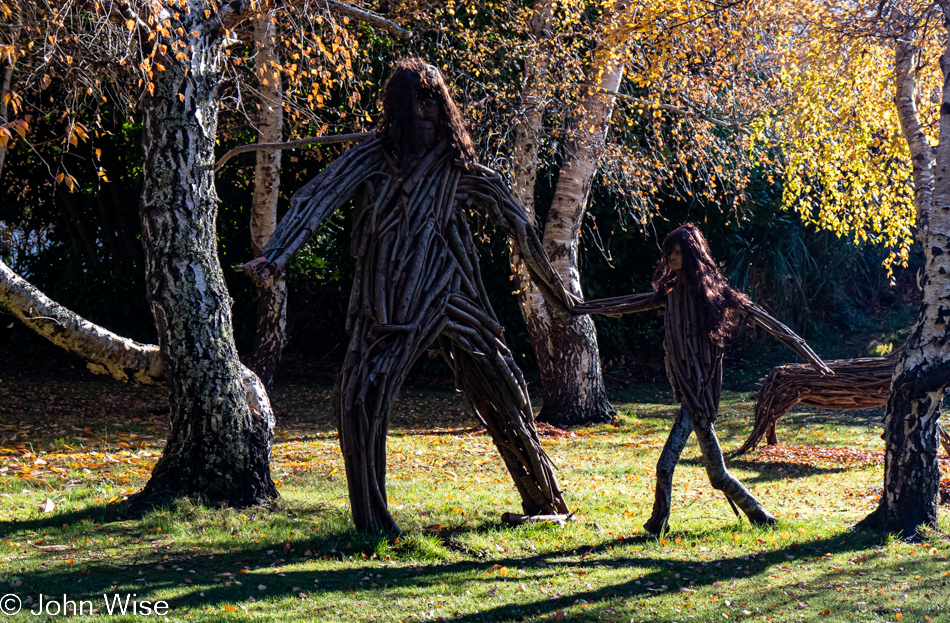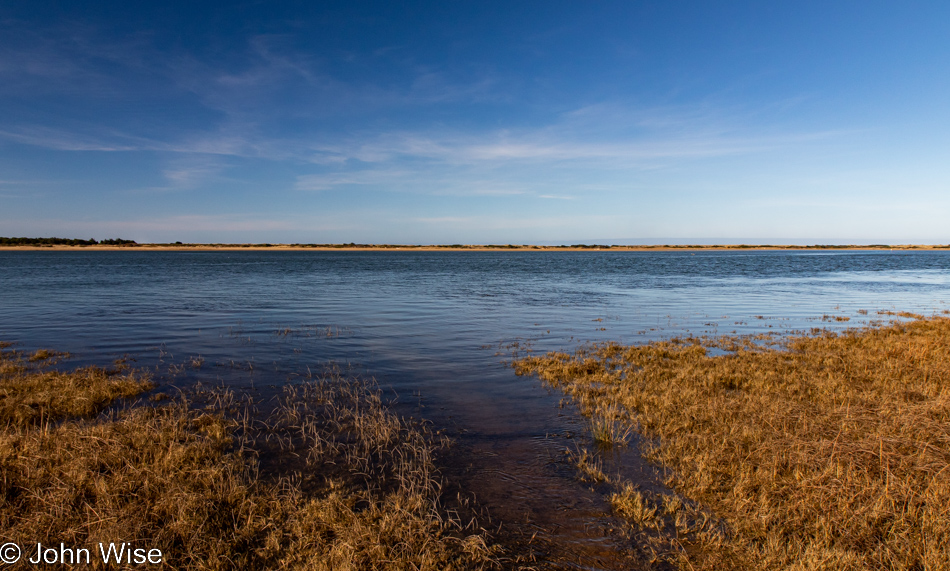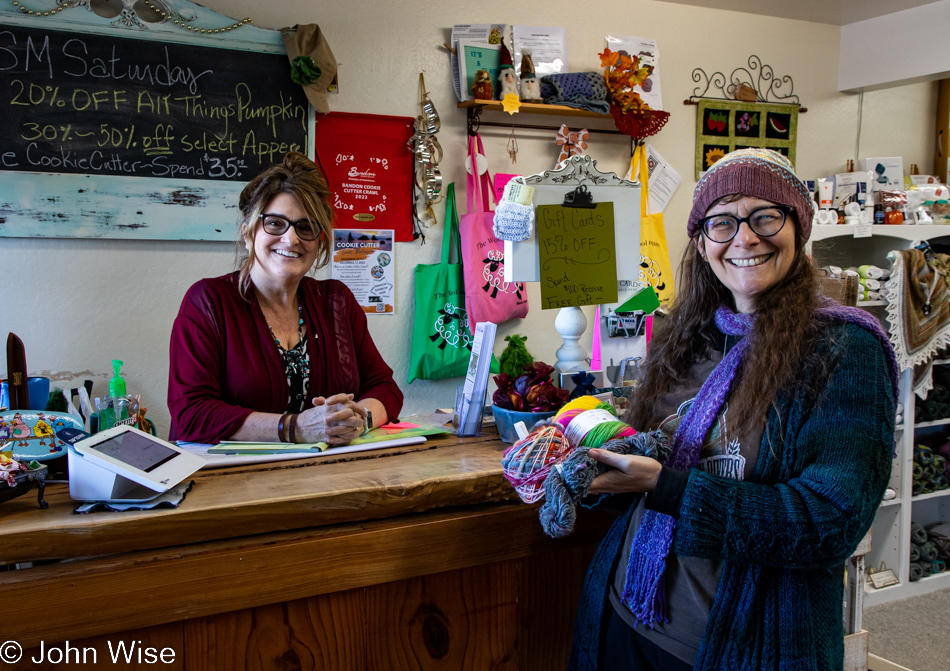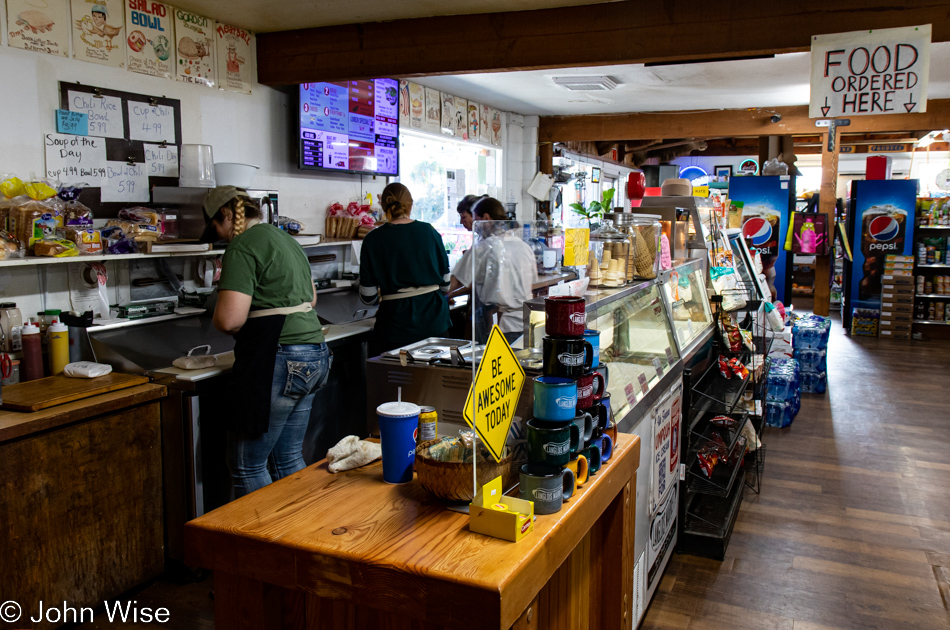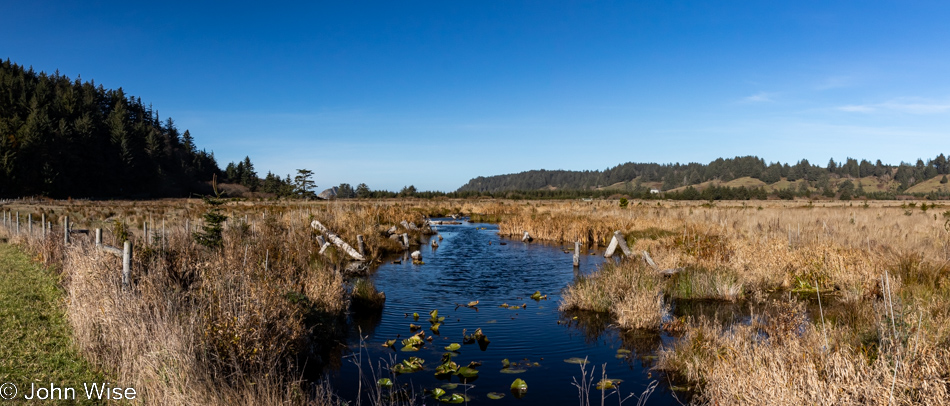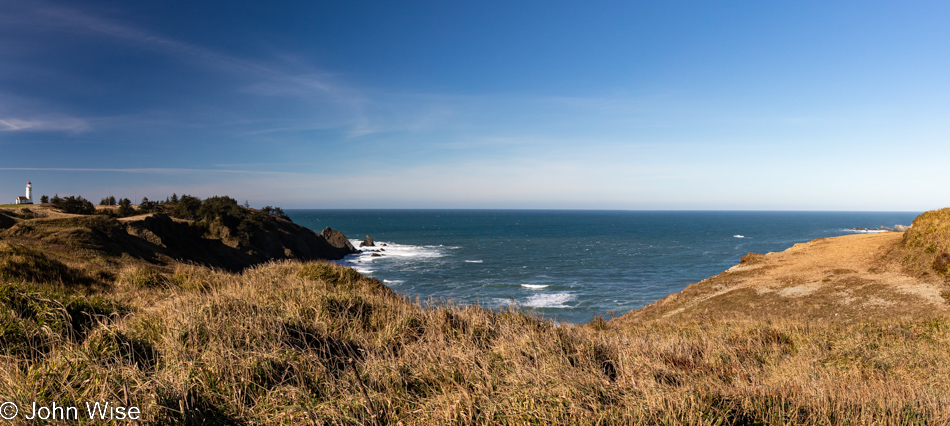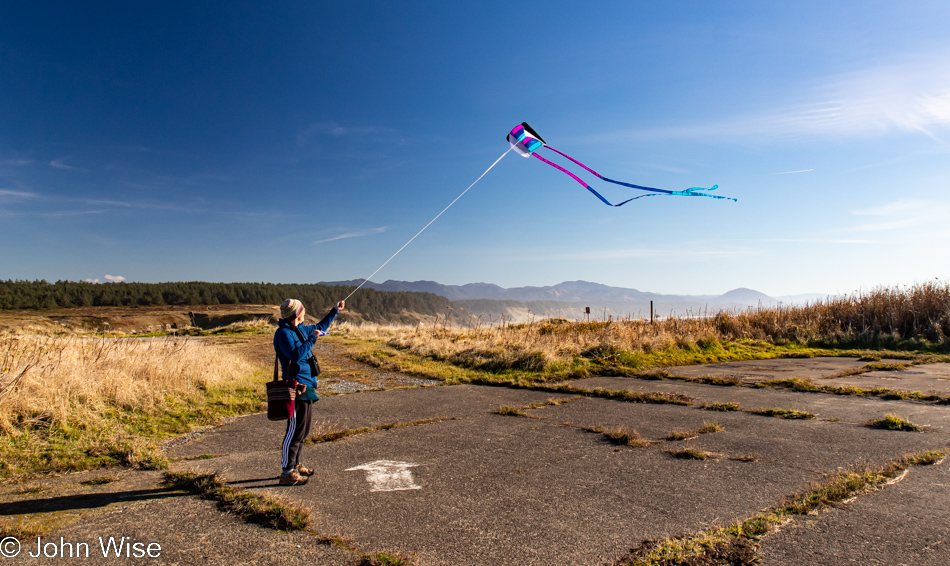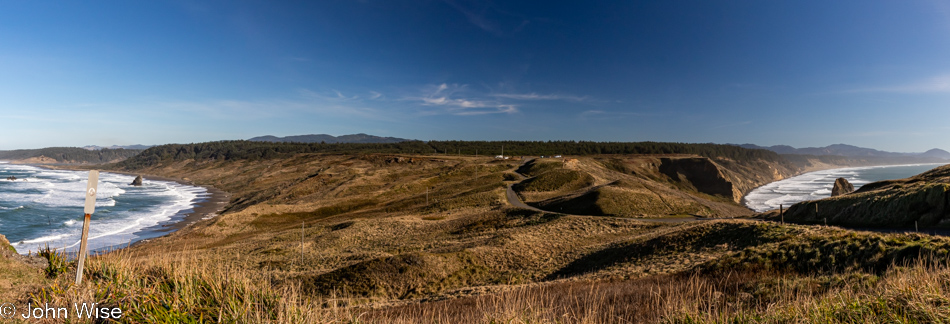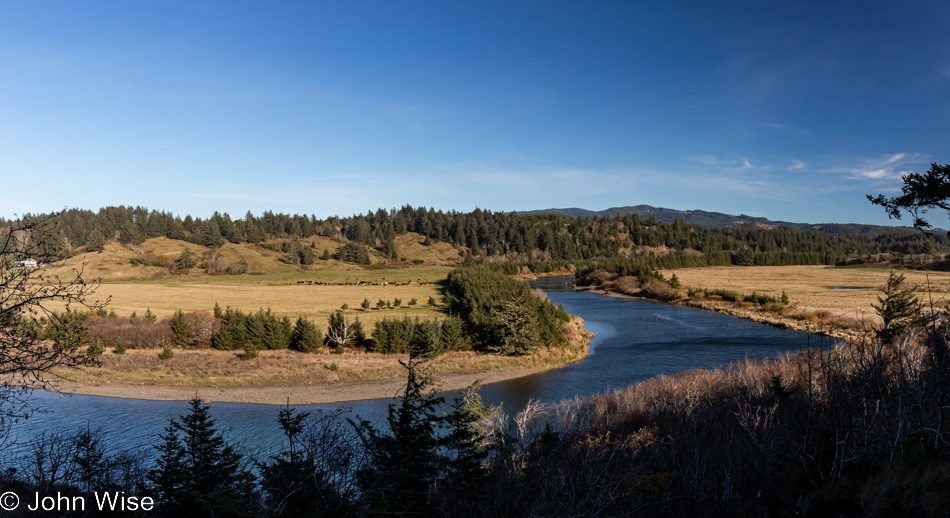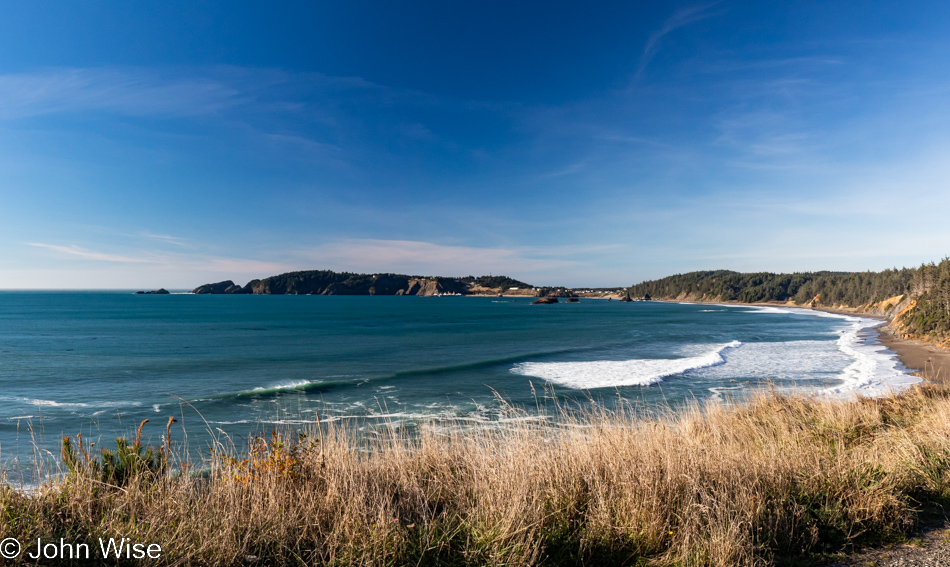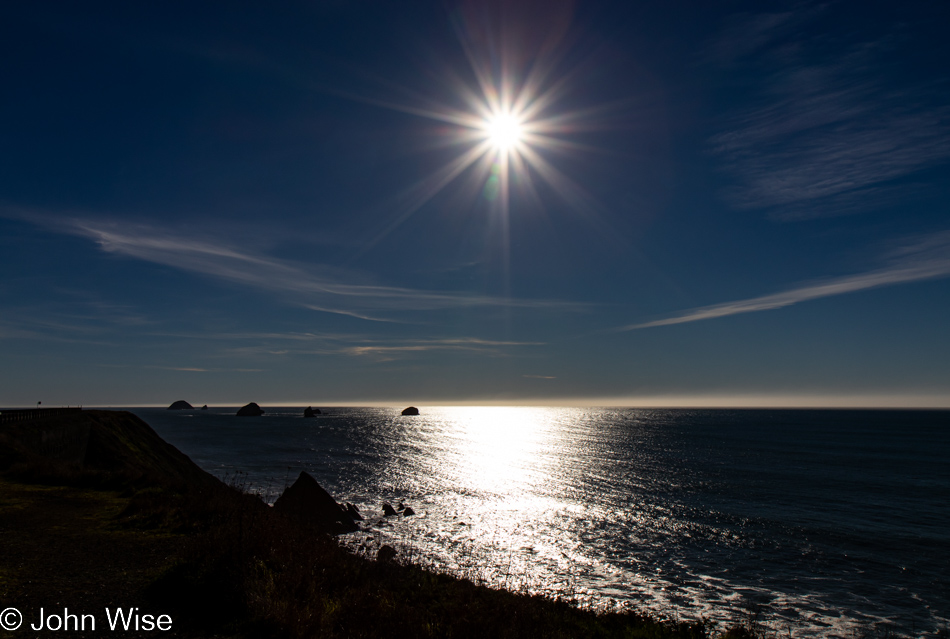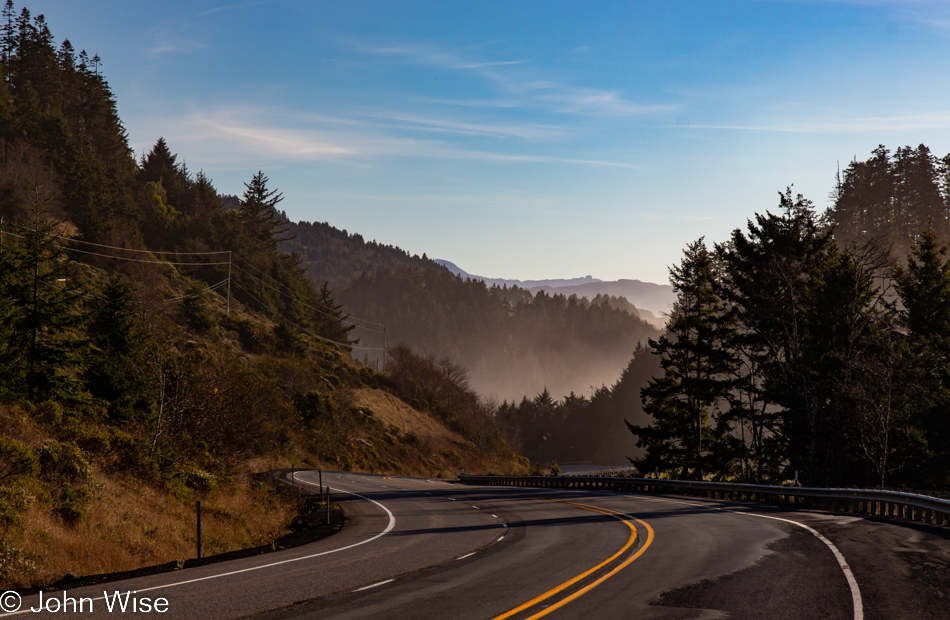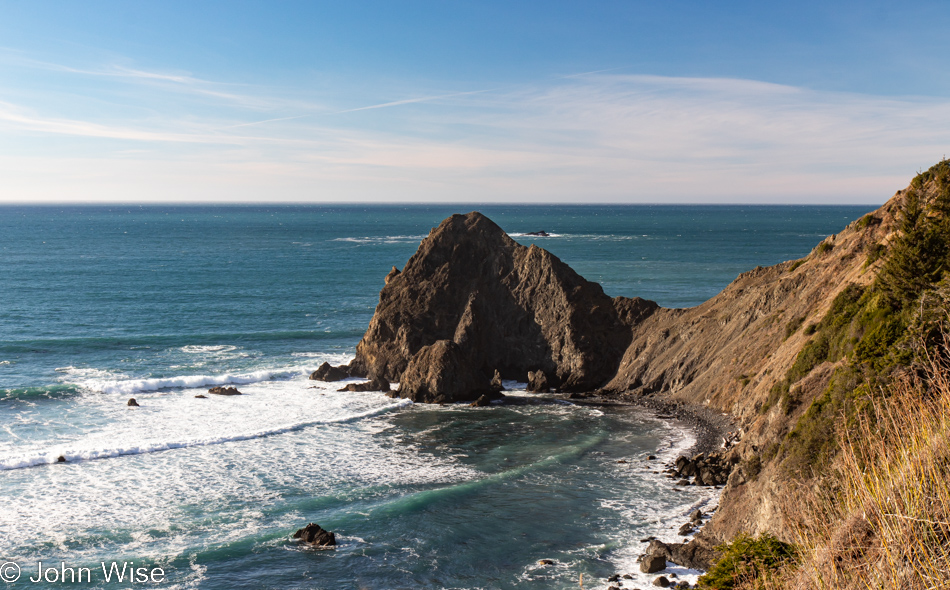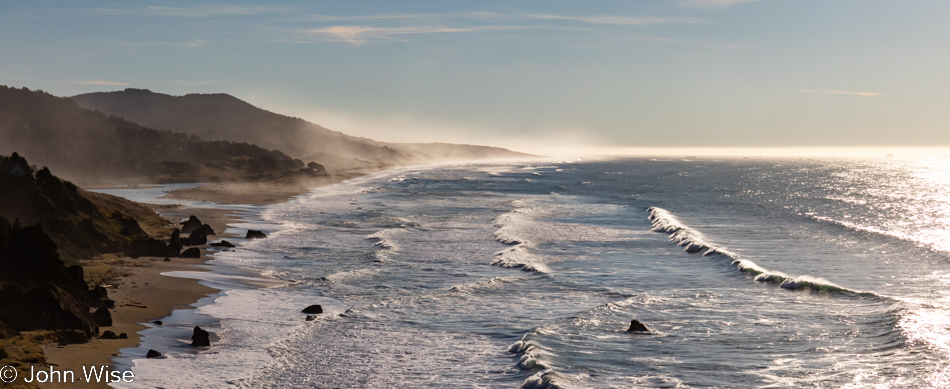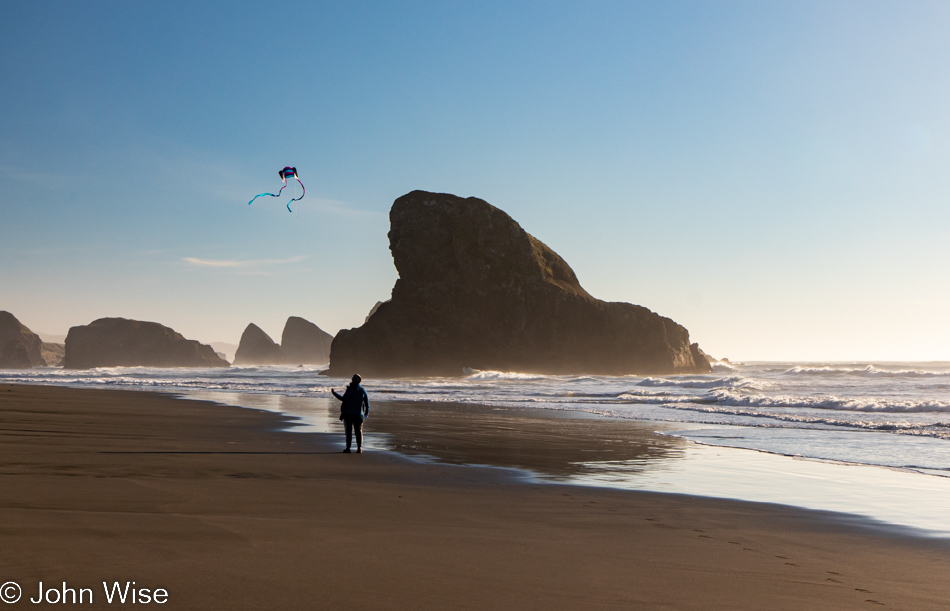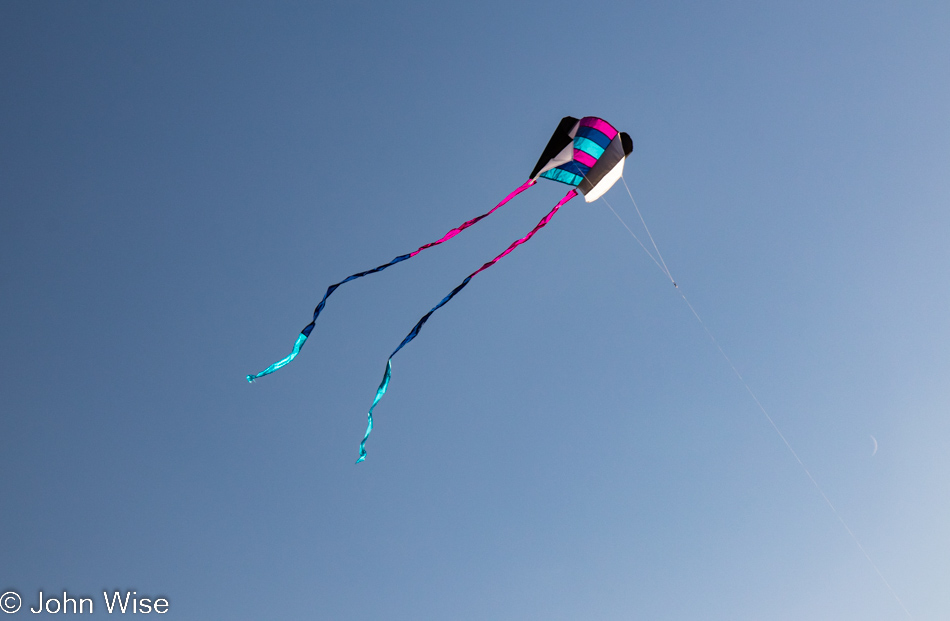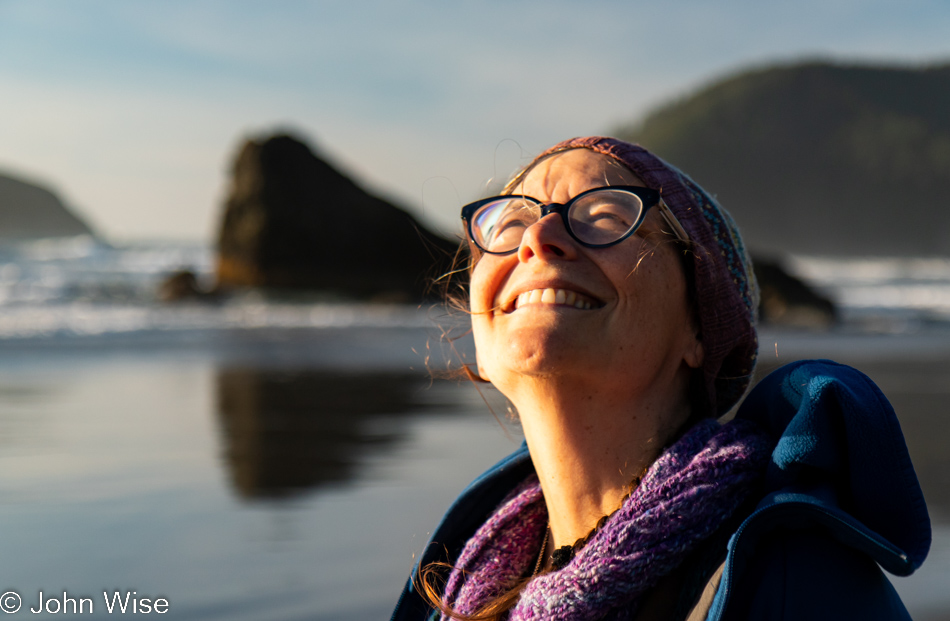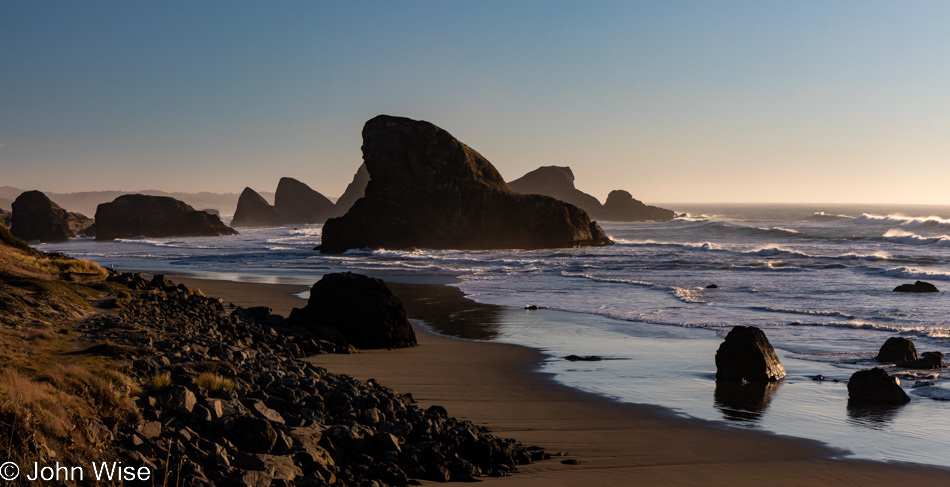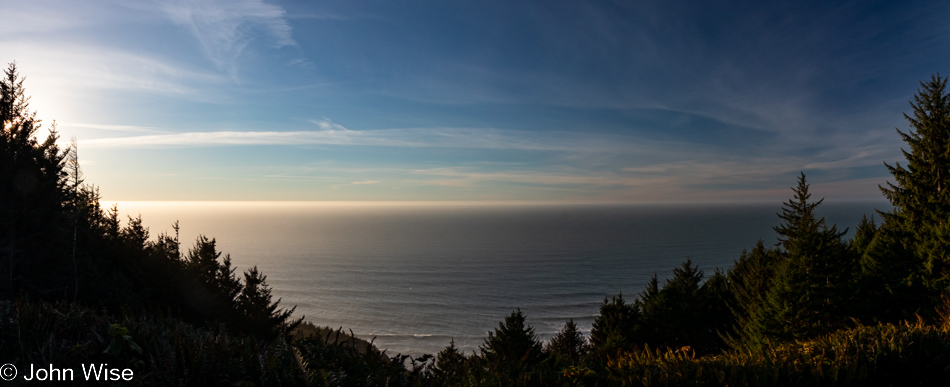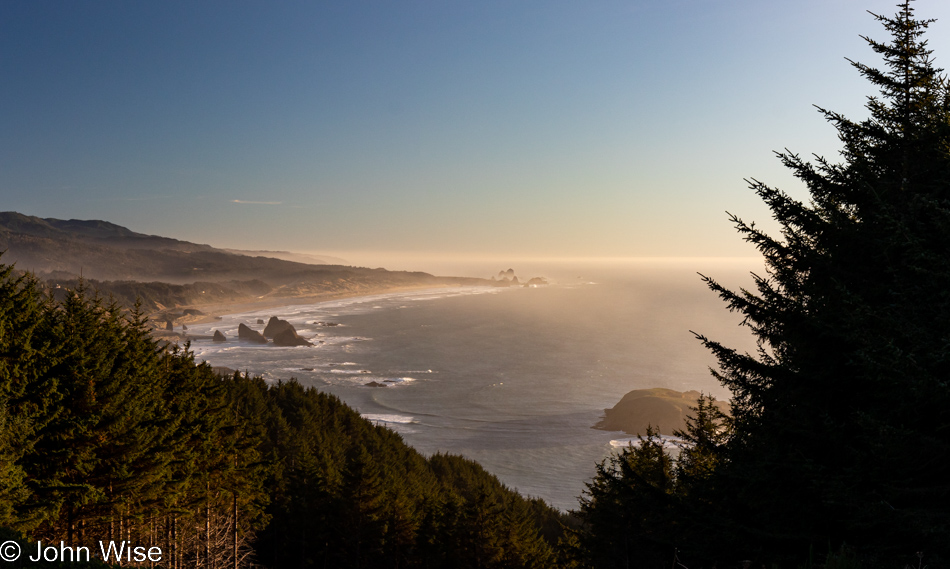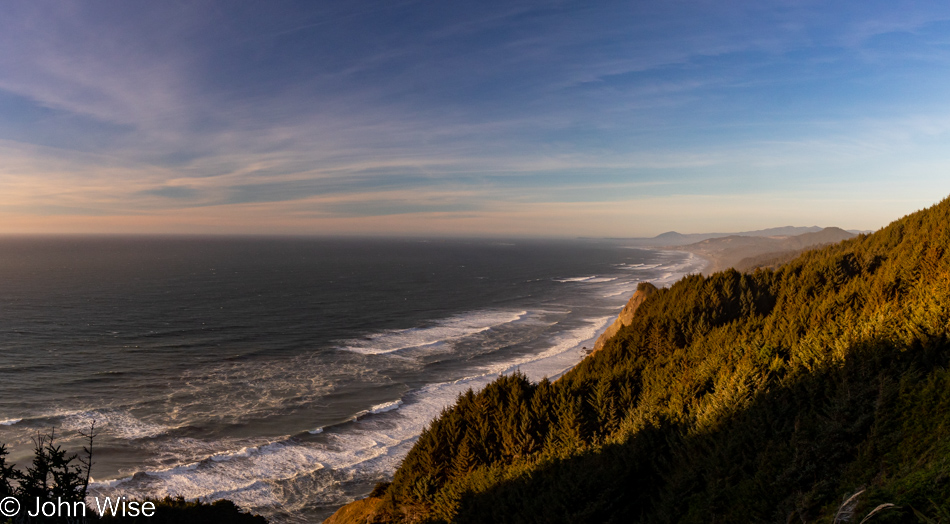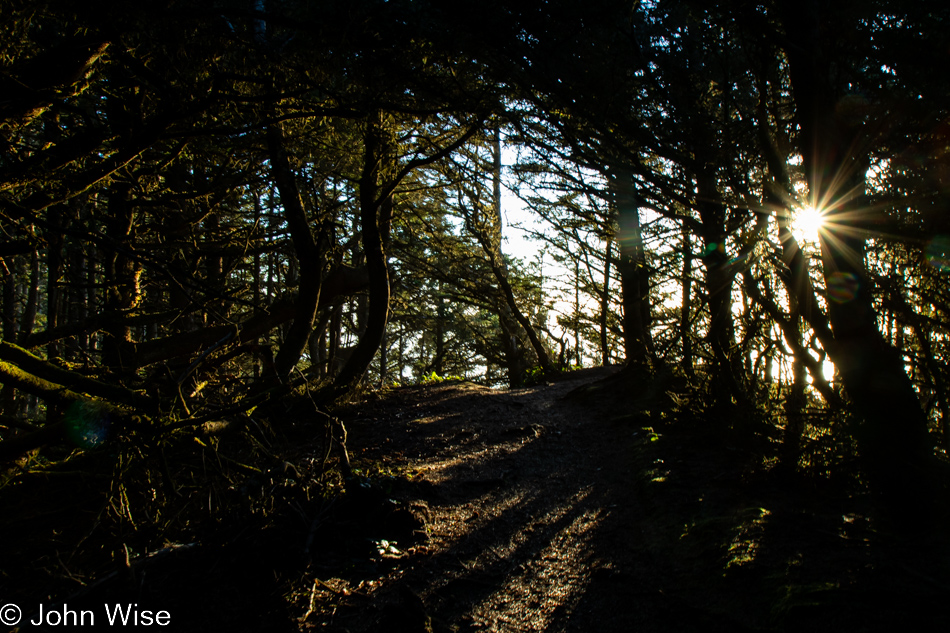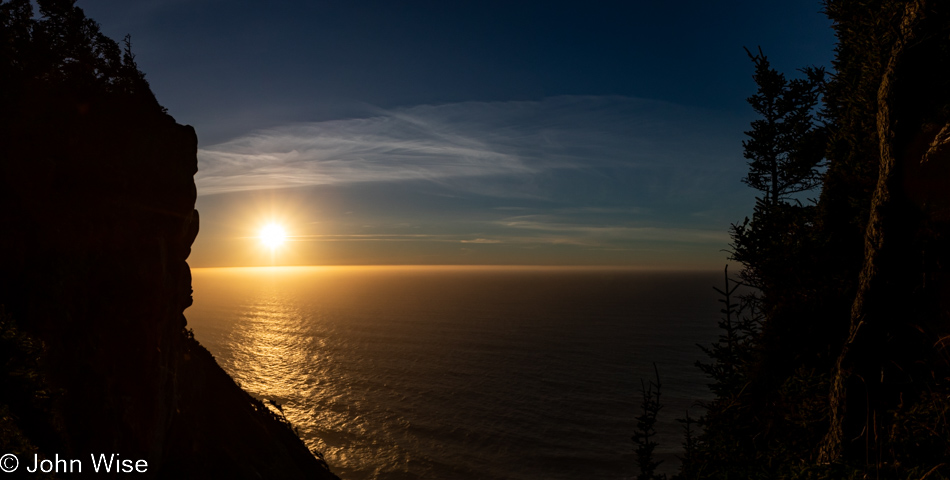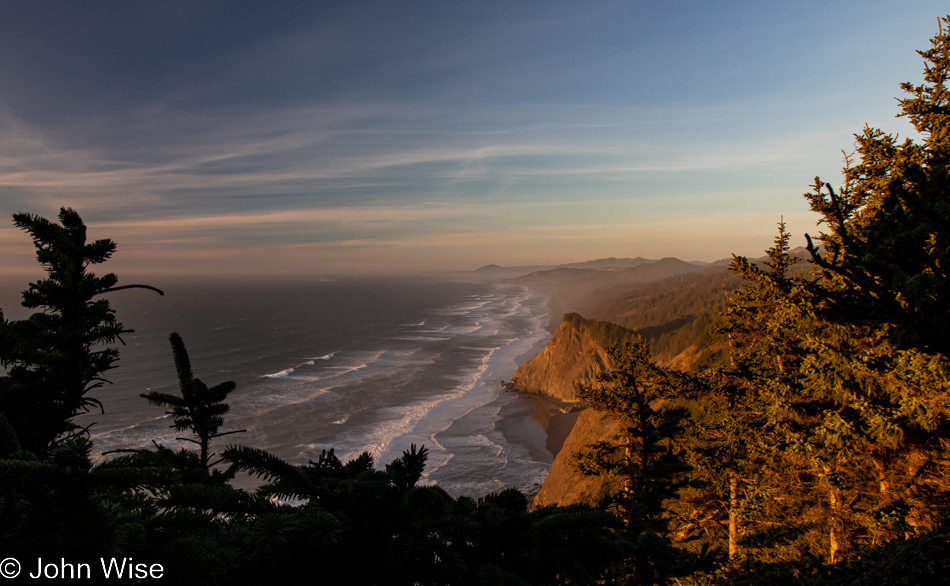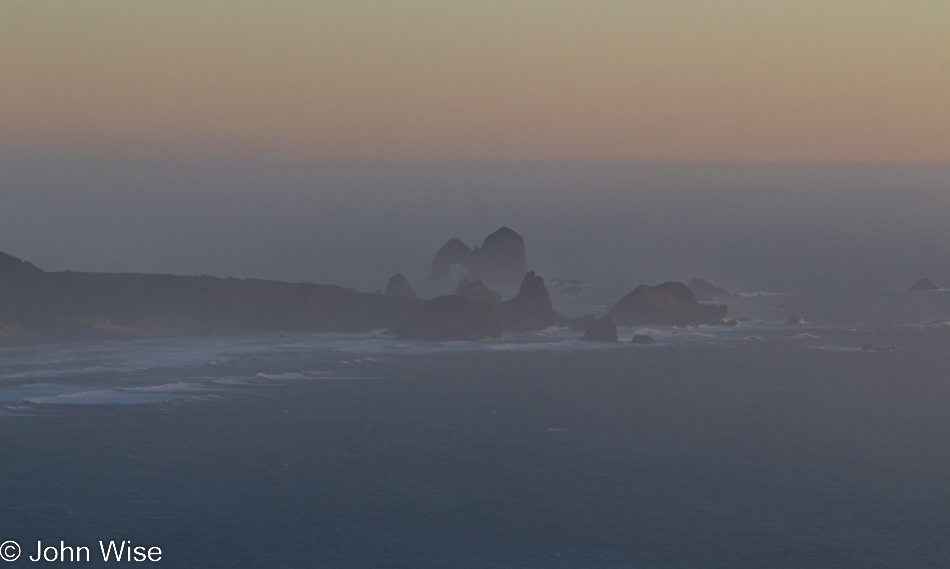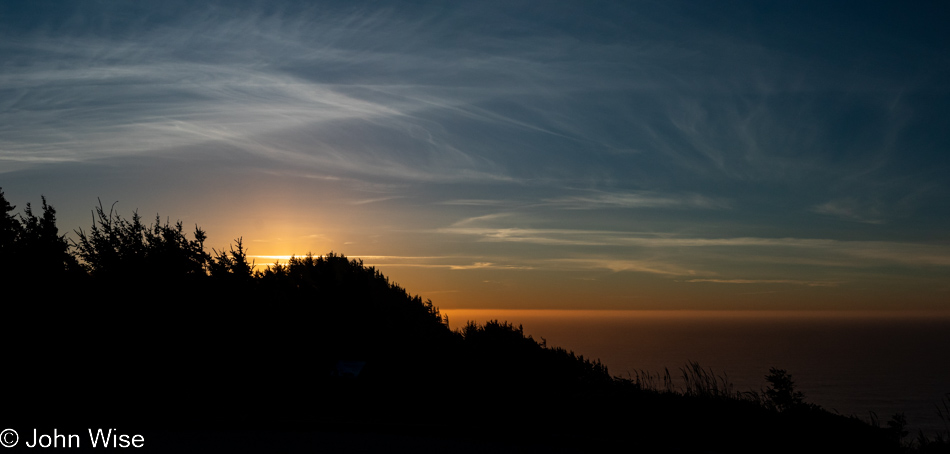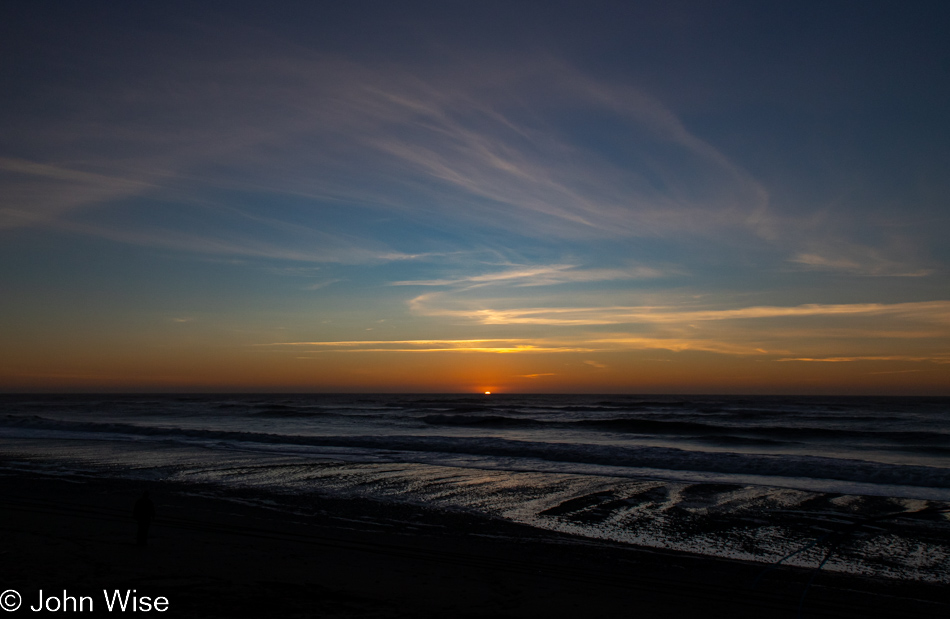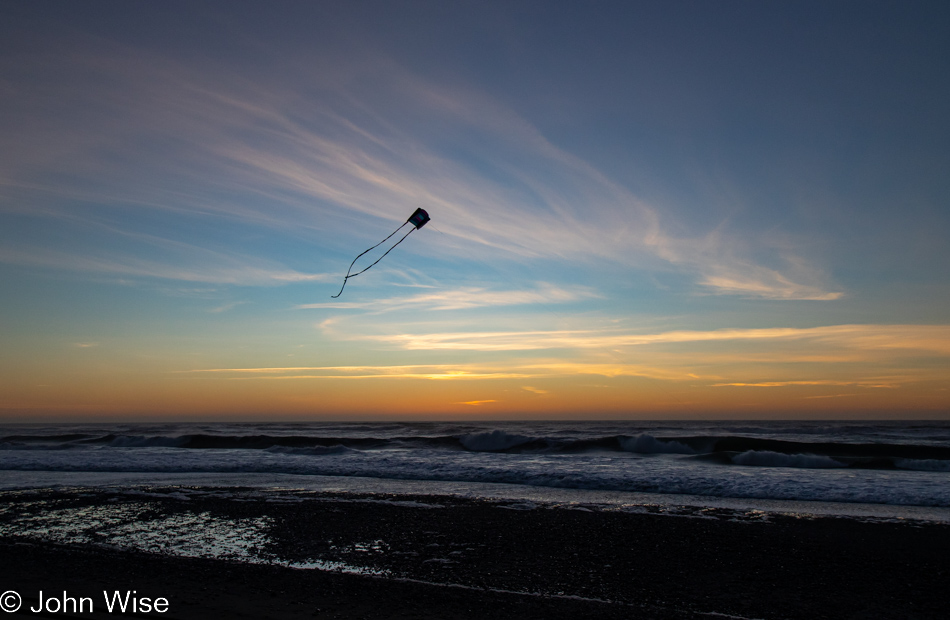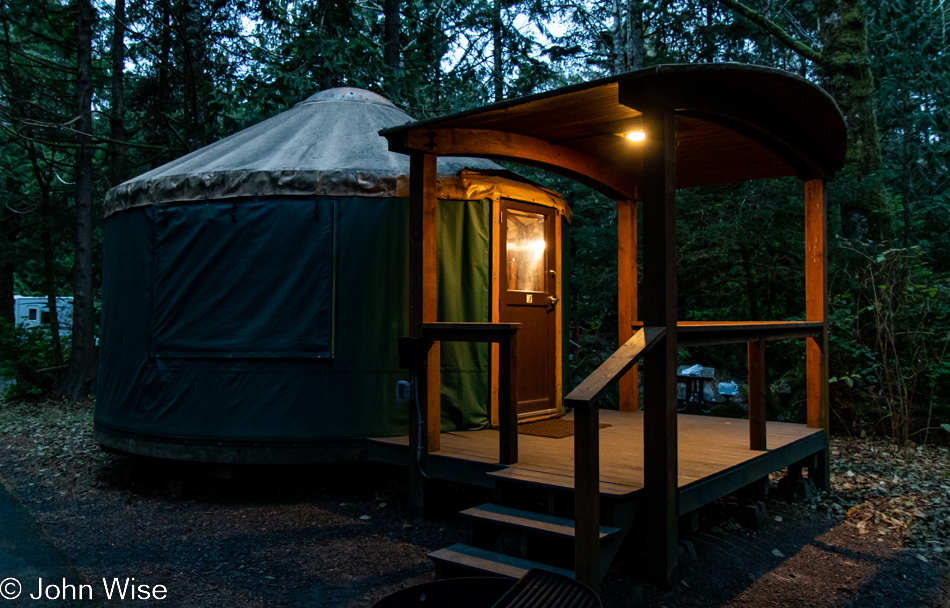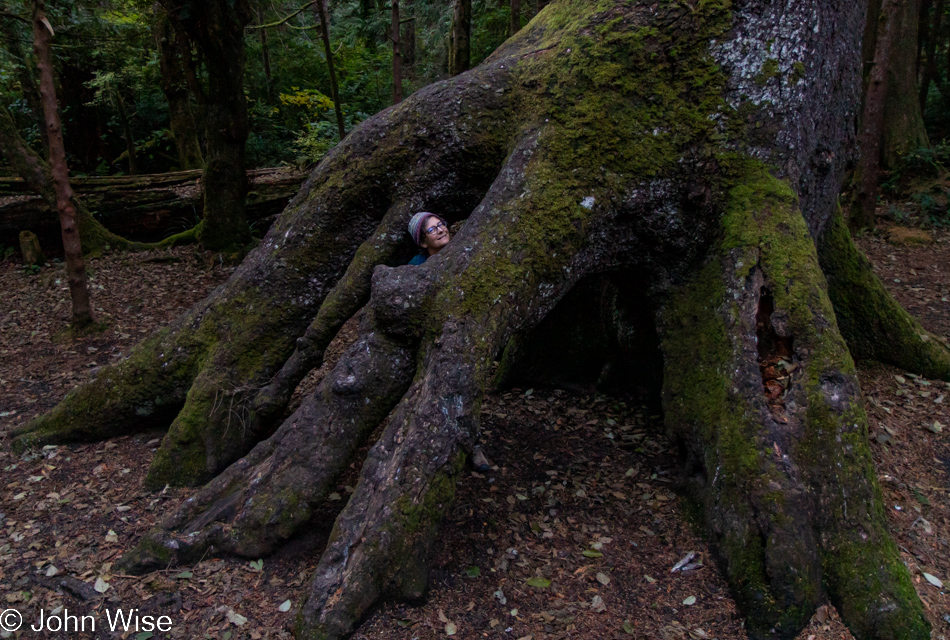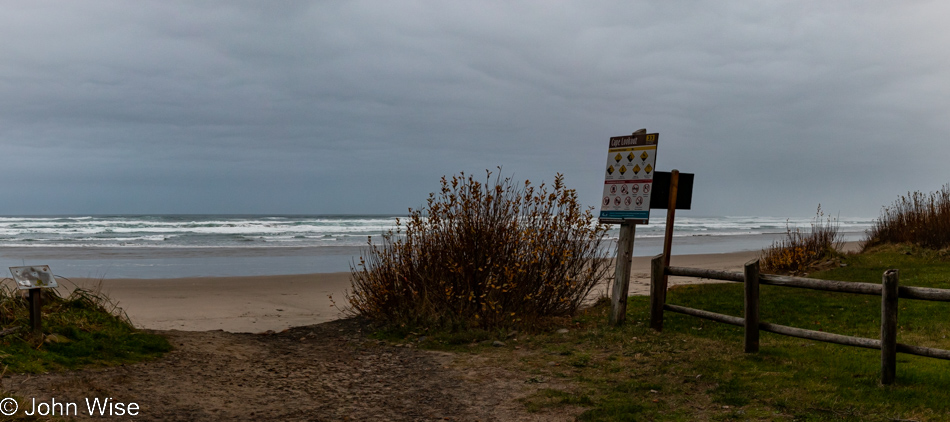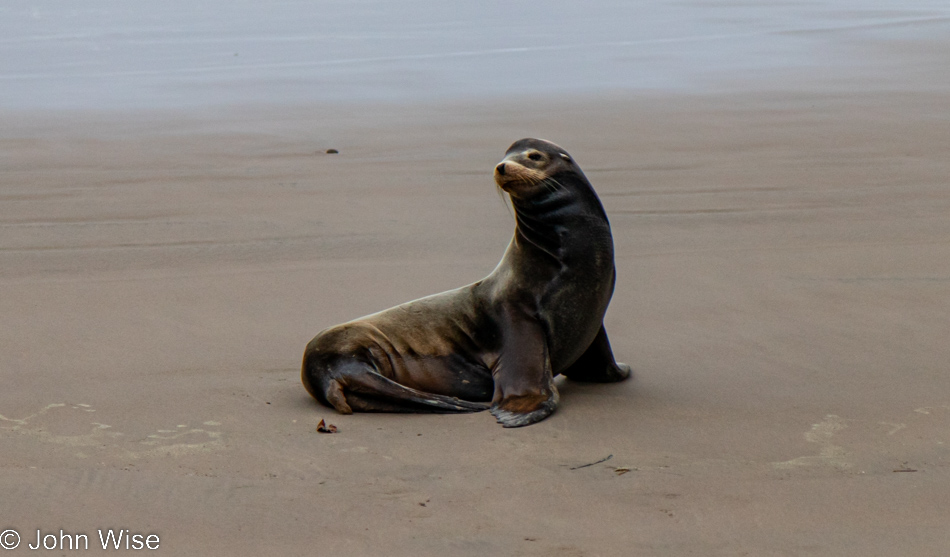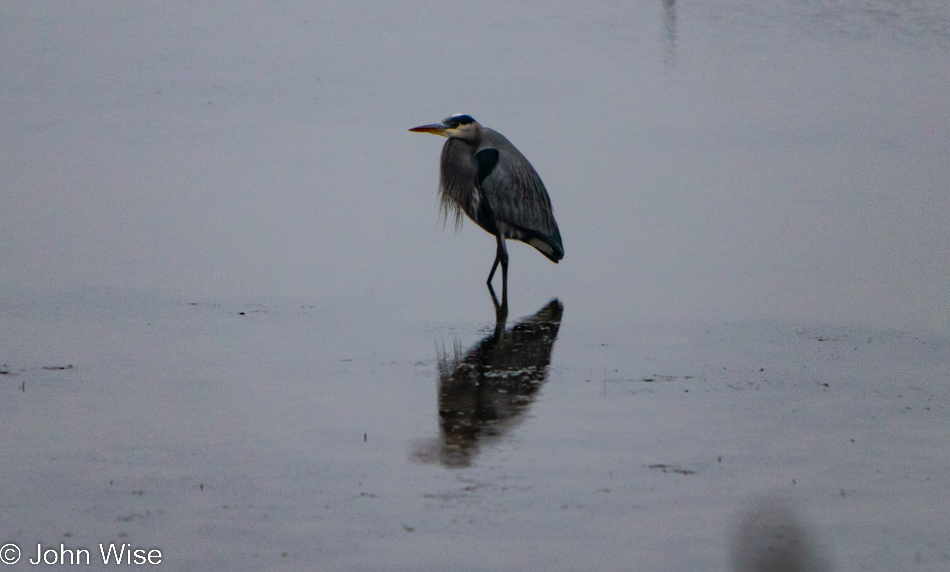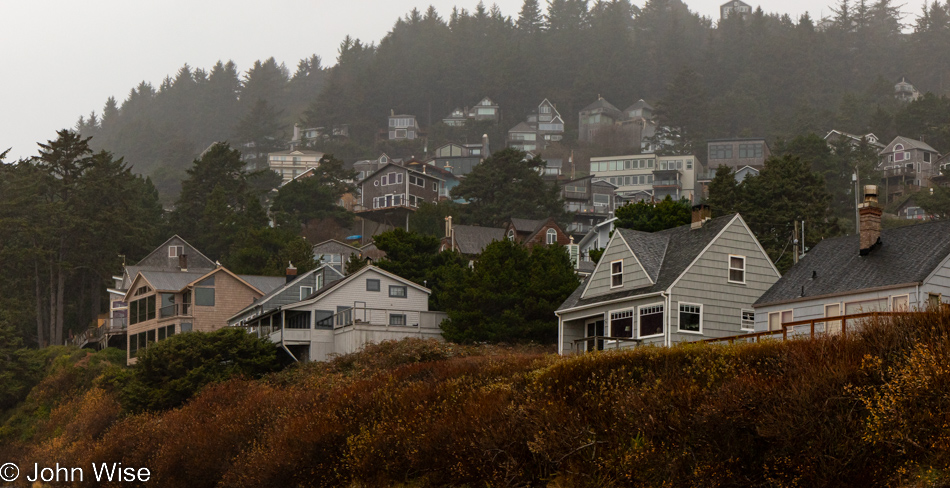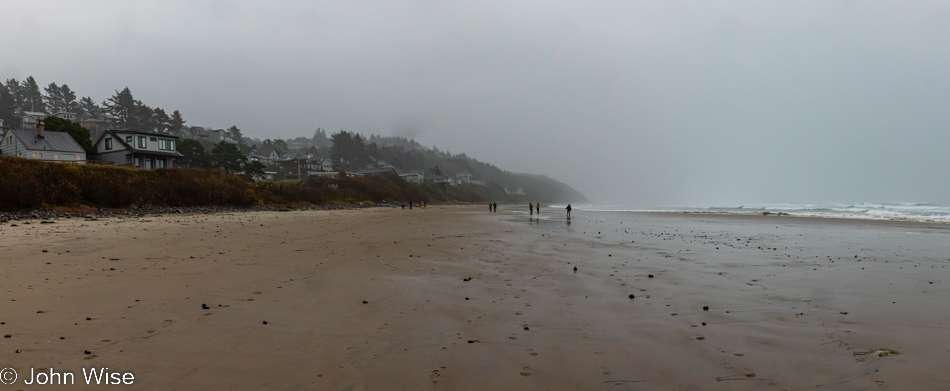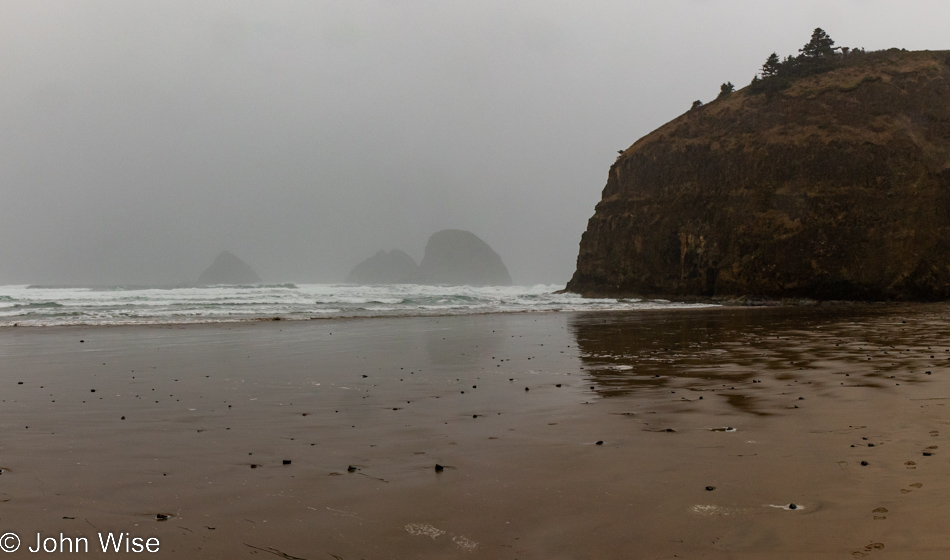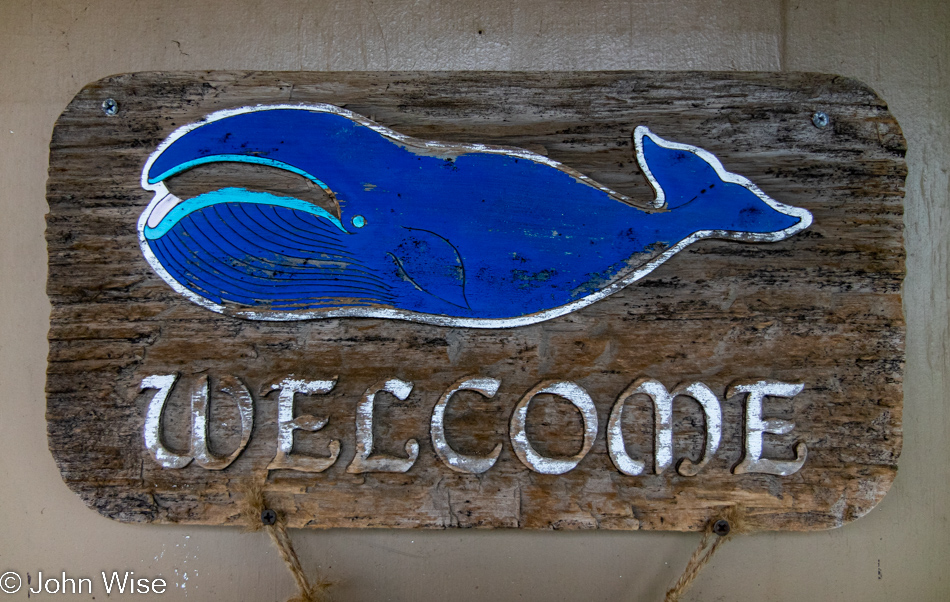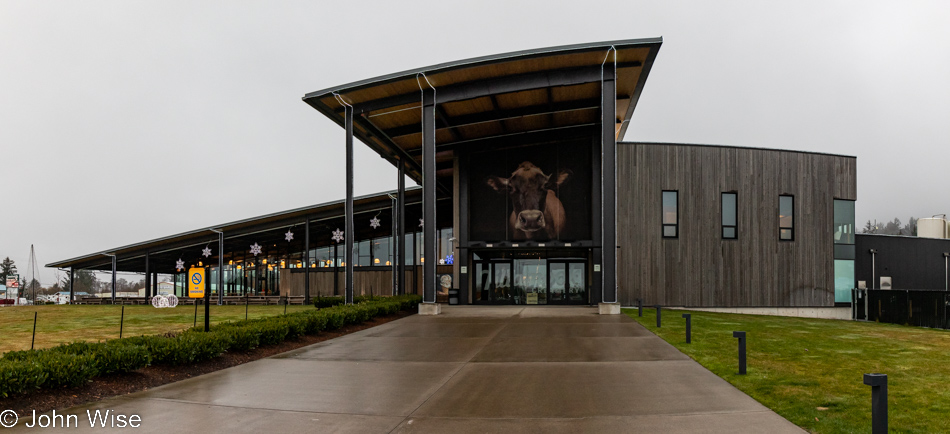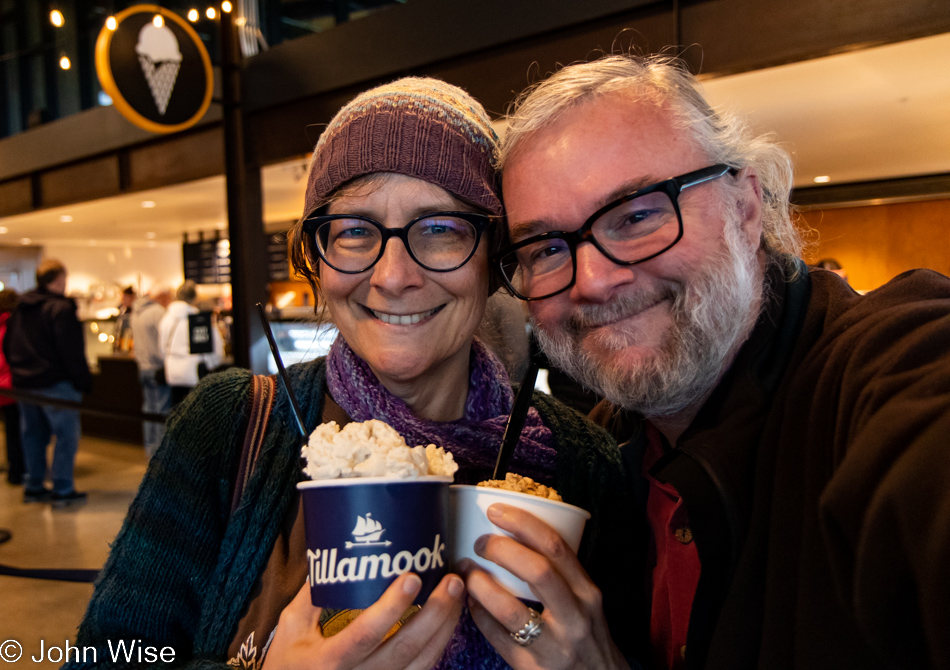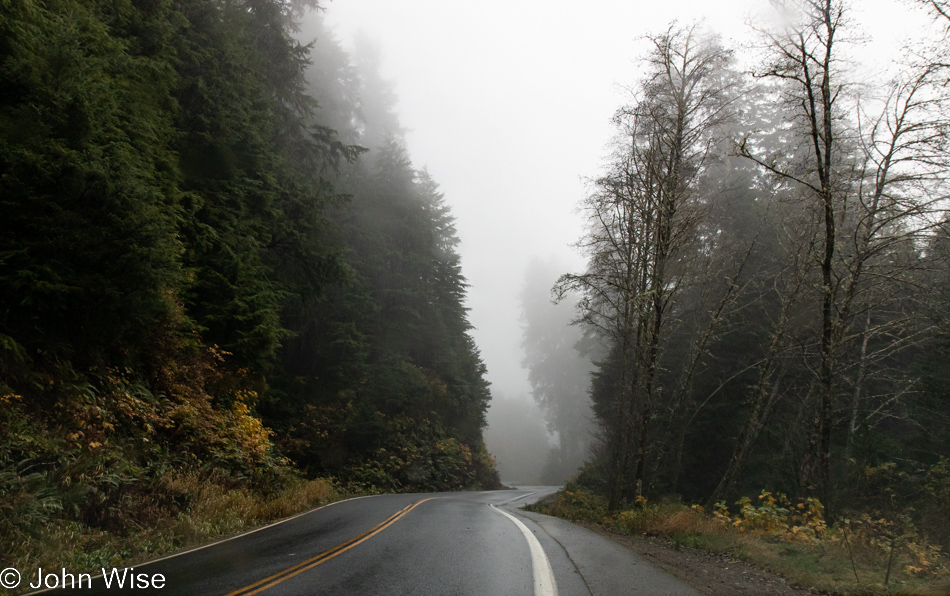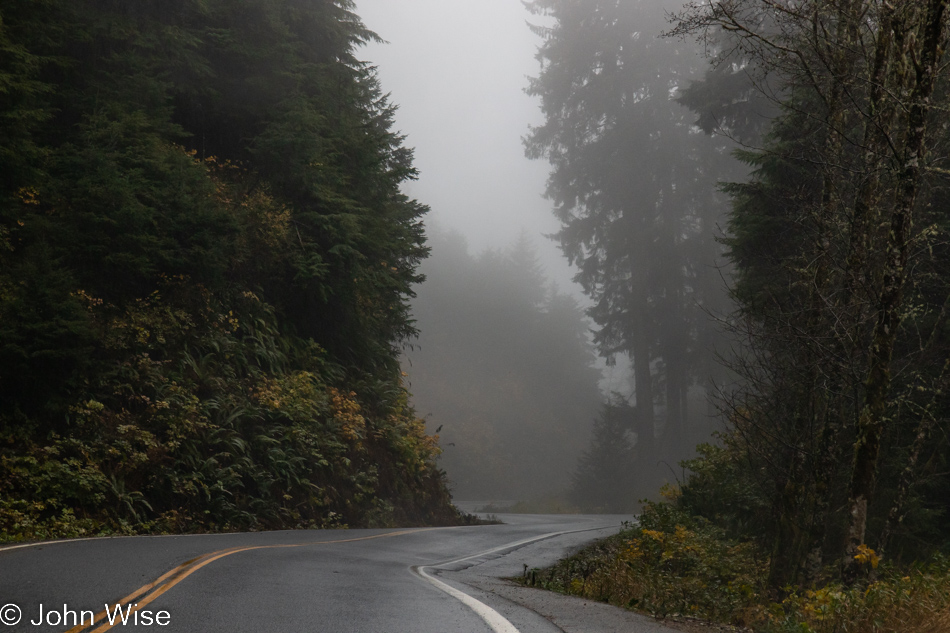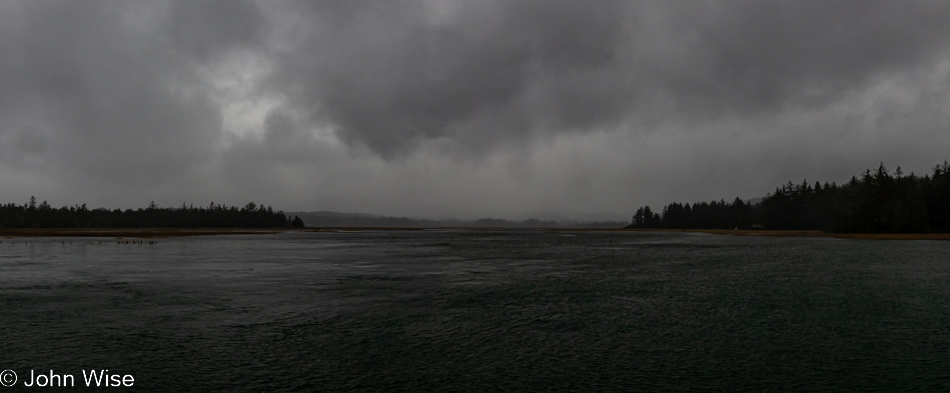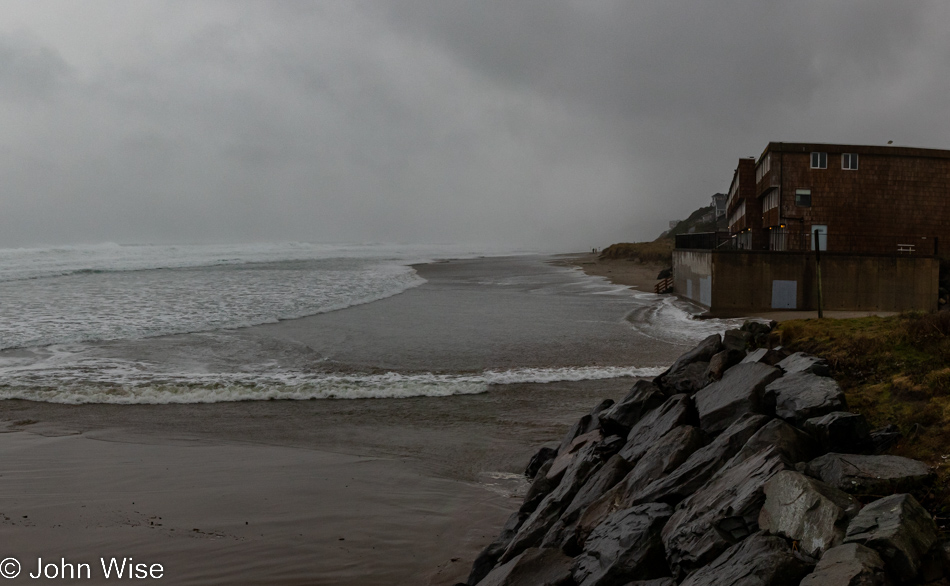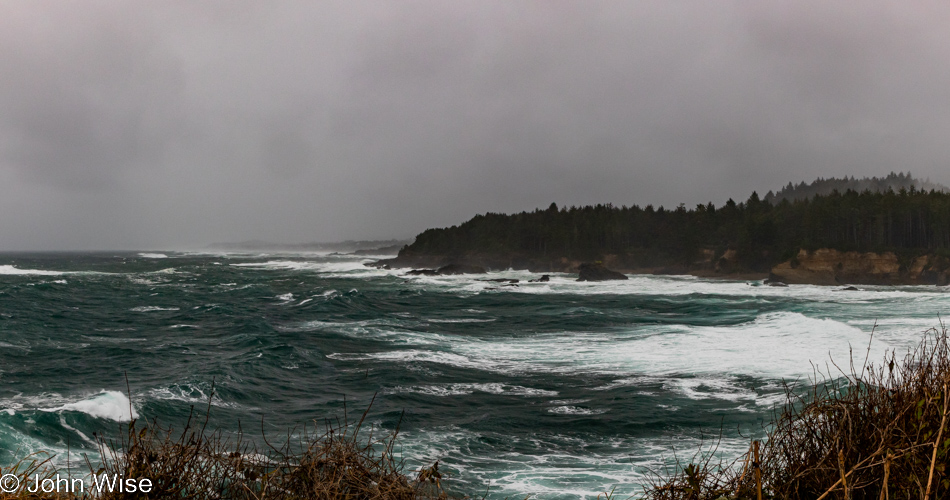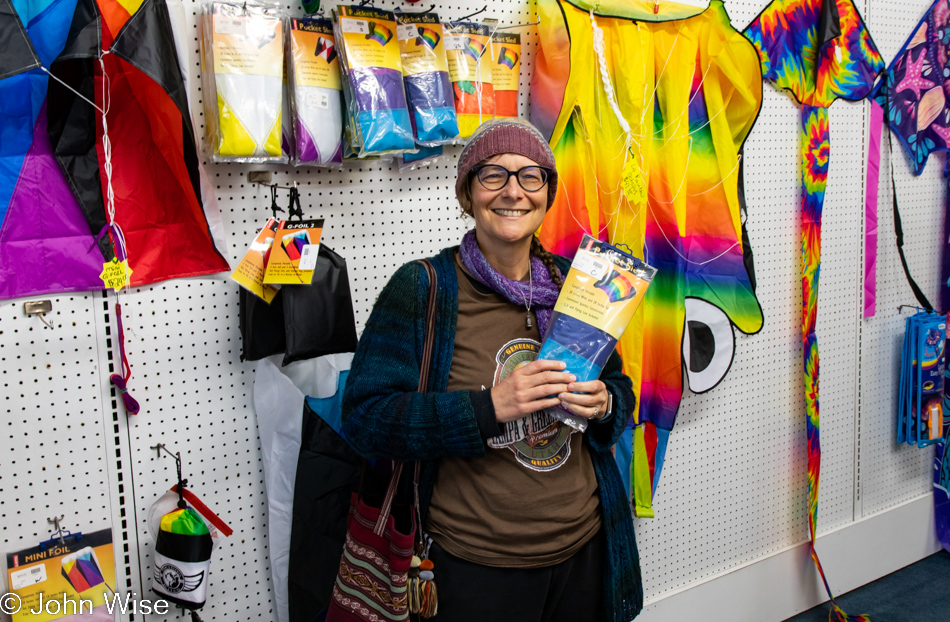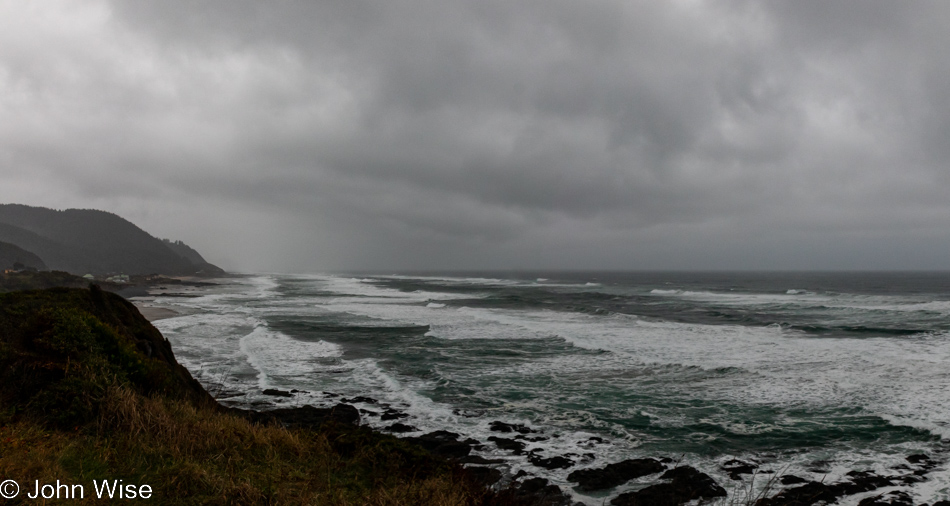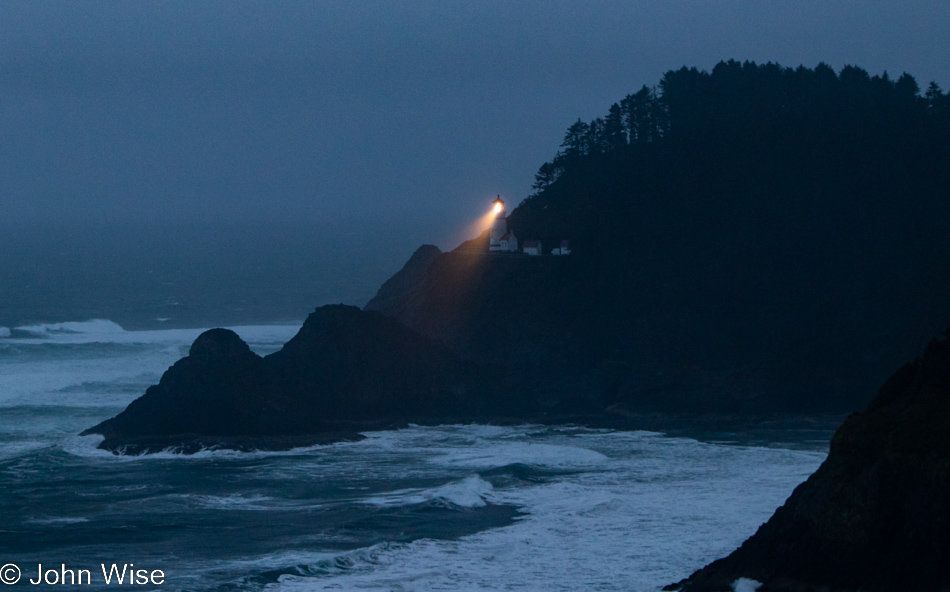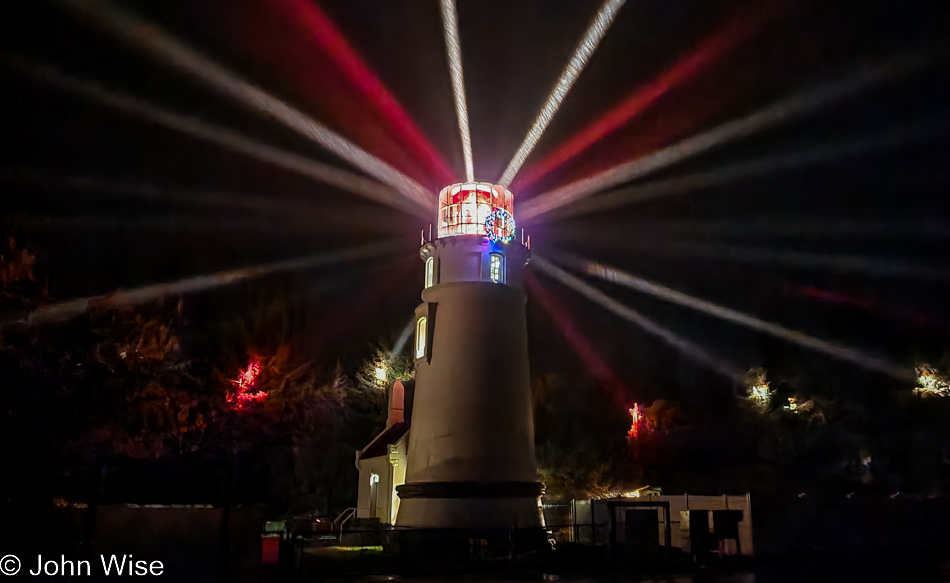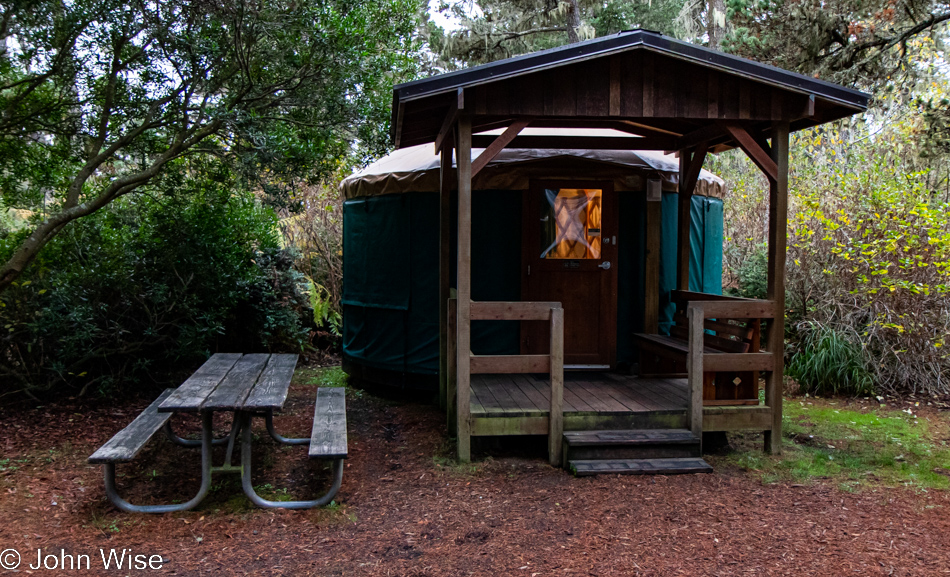
Welcome to the tenth and final day of our coastal vacation that saw us waking in this yurt at Bullards Beach State Park in Bandon, Oregon. We watched a rafter of turkeys stroll by, and while I tried to get a decent photo, it just didn’t work out with our car as background, a curb in the shot, the motorhomes across the way, etc. So, with the sadness that arrives at the last moments of all of our getaways, we pack up one last time, say fond goodbyes to inanimate things that don’t care that we were here, and offer wishes that we might return again one day.

Might not have been able to capture a nice photo of a turkey, but Cosmo the Tufted Puffin had no problem keeping a pose until I got something reasonable. Cosmo took up its perch here at Coquille Point back in 2018 in celebration of Earth Day. Made from recycled materials found on Oregon beaches, it was the efforts of Angela Haseltine Pozzi and her non-profit Washed Ashore that brought Cosmo to be a fixture here on the southern coast. This tufted puffin is likely the only 6-foot-tall bird made of marine debris on our entire planet.
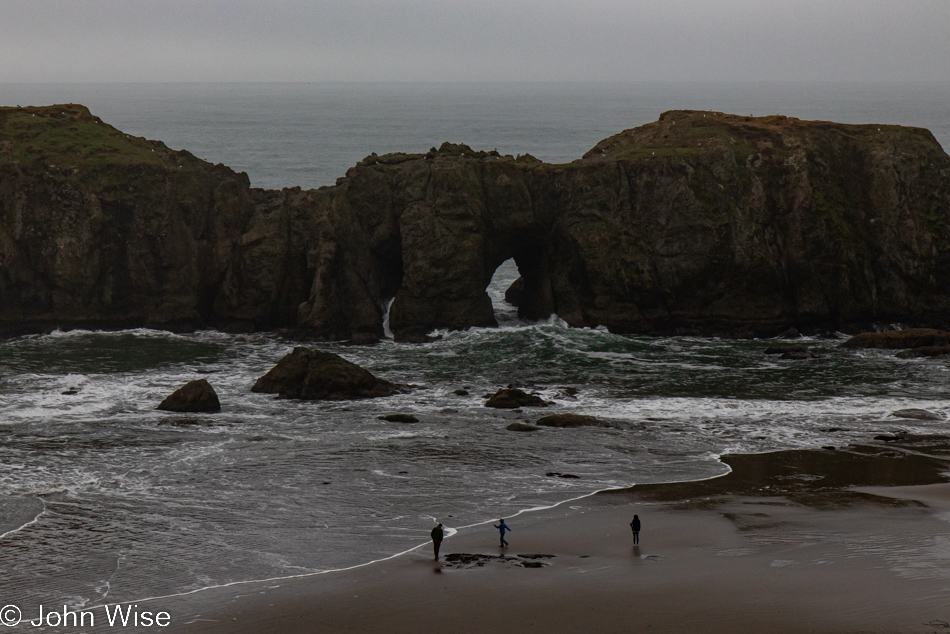
In poor light and an angle that doesn’t exemplify what others see, this is Elephant Rock. Don’t bother trying to catch sight of what I’m failing to bring attention to; let it suffice that the arch is the place between its legs. While Face Rock has always been obvious to me, I just learned that this one is officially called Elephant Rock, and I fail to see why.
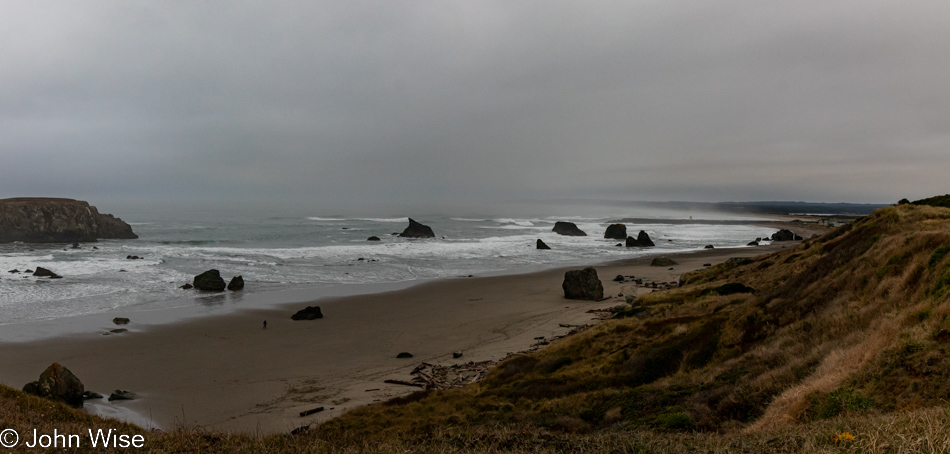
With the weather holding, meaning it’s not raining, there’s no time left to waste if we are going to get some beach exploration in.
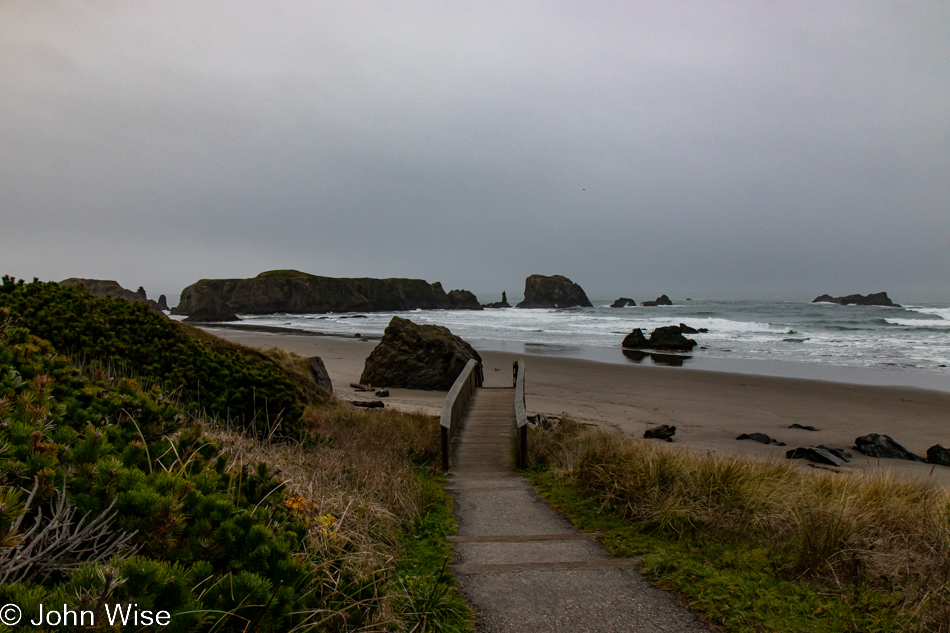
And so, down we go.
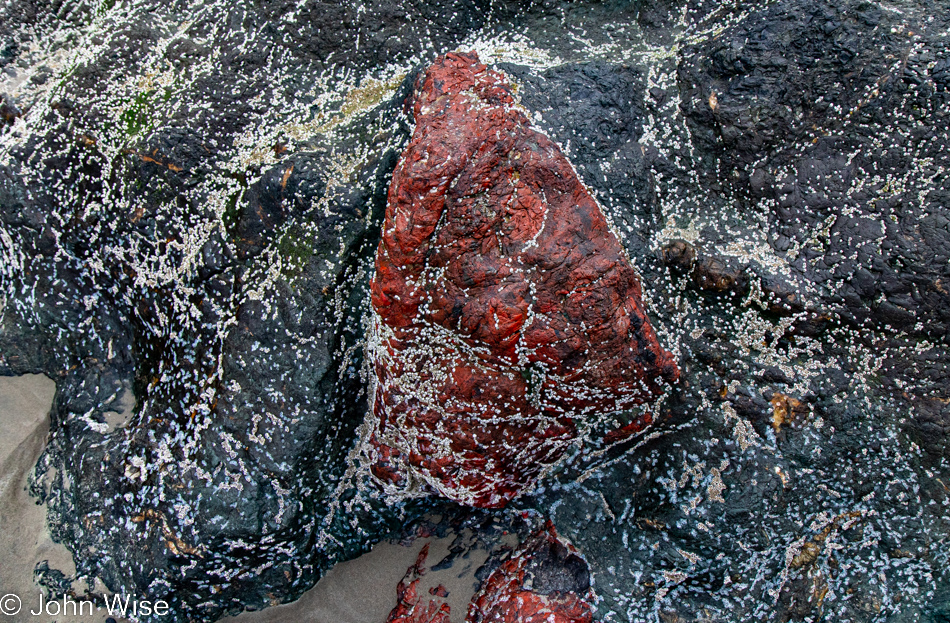
This will not be further musings on the world of barnacles, though this is definitely one of the largest clusters of tiny ones. I’m more curious about the blood-red rock sandwiched in the surrounding metamorphic rock. I just learned that the sacred Sae-Tsik-Na (“Grandmother Rock”) that used to stand out here was quarried out of existence for the building of the Bandon jetty back in 1900. Well, that sacred rock to the Coquille people was made of blueschist speckled with red garnets, and if this is some ancient metamorphosized sandstone with a high amount of iron oxide in it, this would be the deepest red sandstone I’ve ever seen. I understand that the red rock is not translucent, so not likely to be red garnet, but could it have been on its way to becoming a gemstone had it remained in the deep miles below the surface for a bit longer?
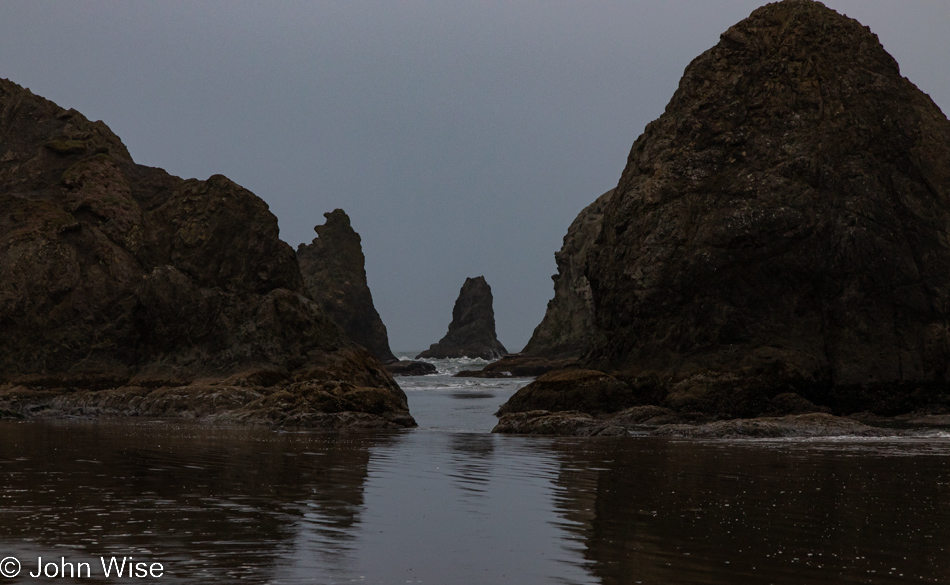
Looking up the rocks standing out here, I learned that they are called knockers (cue John’s childish giggles) and are formed after the softer rocks and soils wash away. The really cool thing is that some of the rocks out here formed hundreds of miles apart, but thanks to millions of years of subduction, they’ve ended up here.
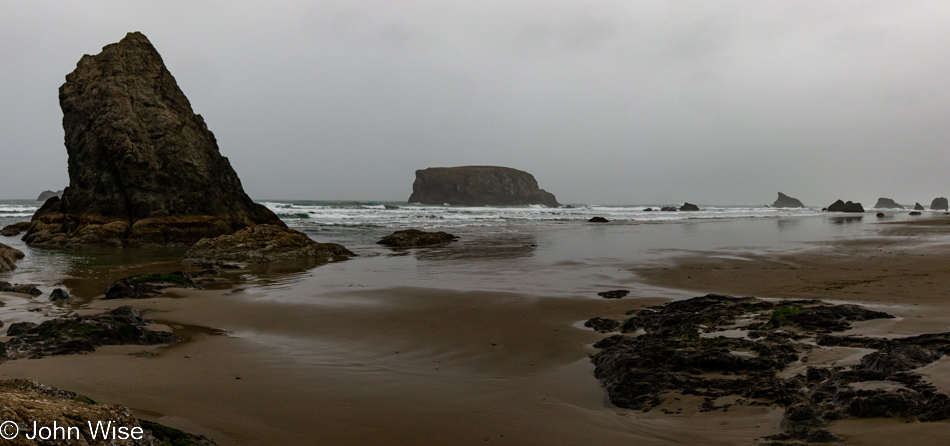
All of a sudden, the gloom of the sky, in a sense, lifts, and I see the beach here in Bandon in a whole new light. If we might have thought that this trip to the Oregon coast might be our last, it is nearly certain that we’ll have to make a return as there are obviously things that require deeper examination.
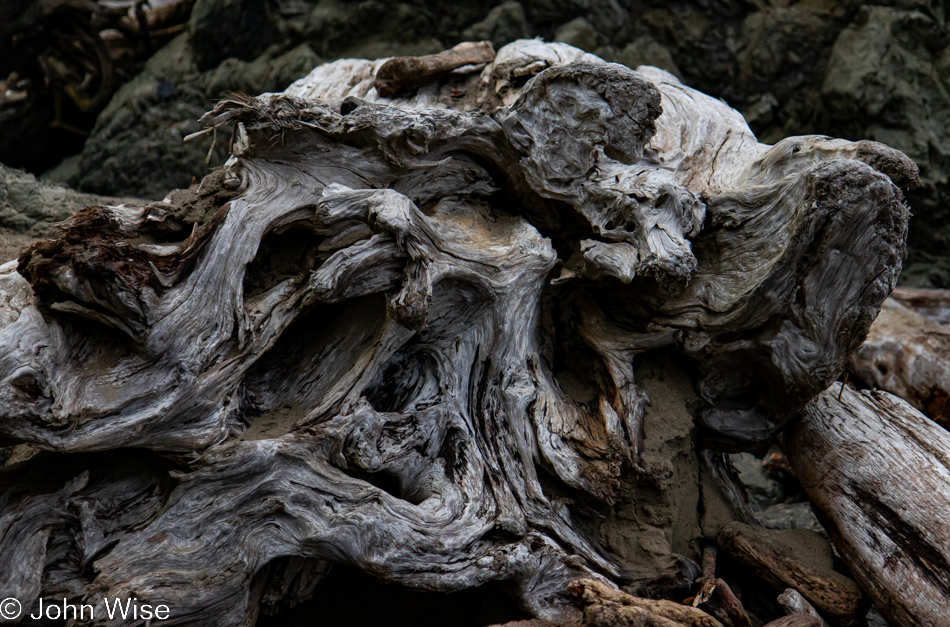
Between two sides of the beach is an outcropping with a cut in it that is filled with boulders and large pieces of driftwood. We only need to scramble through it to reach the other side.
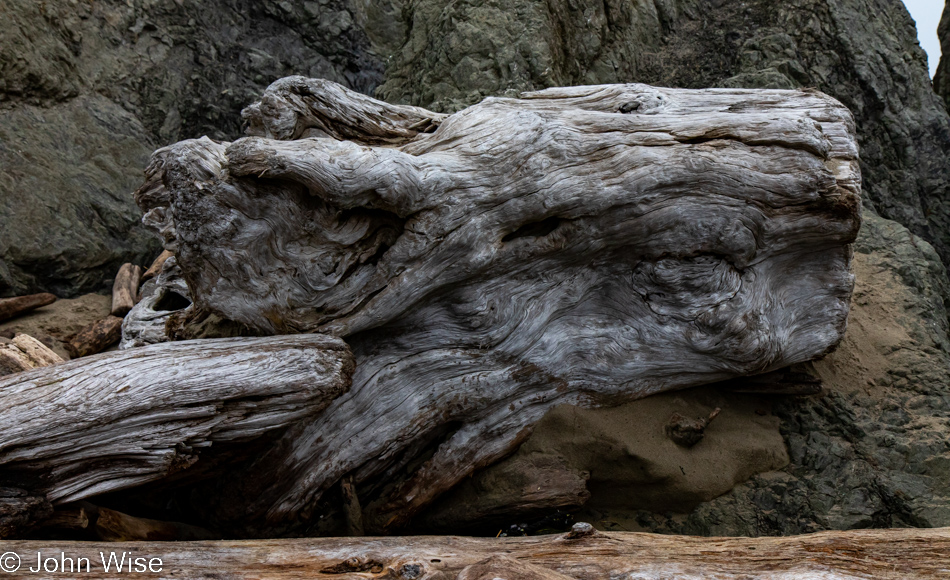
Doing so without distraction is another matter, as there are thousands of details here worth scrutinizing.
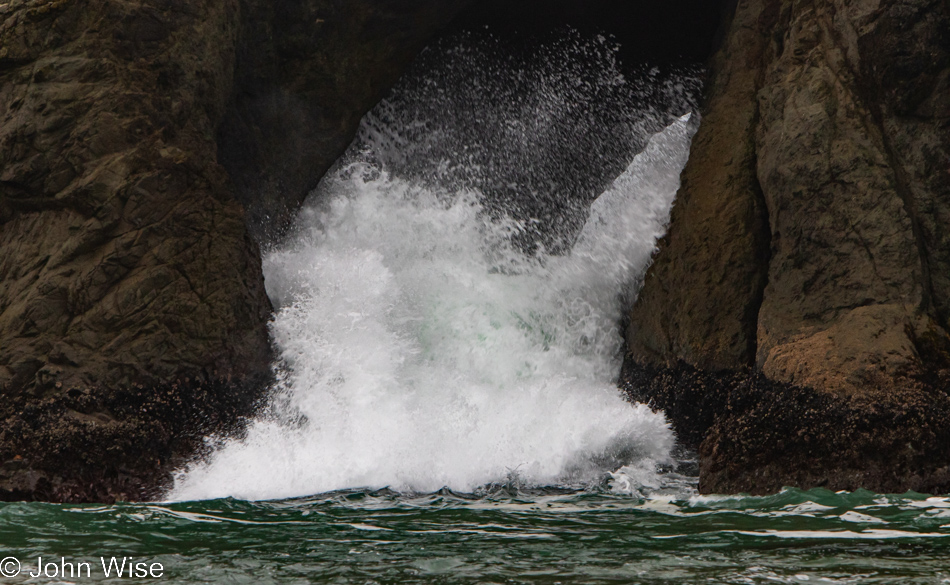
Once on the other side, we get a better view through the arch between the legs of the elephant, except for the backed-up water that obscures the view.
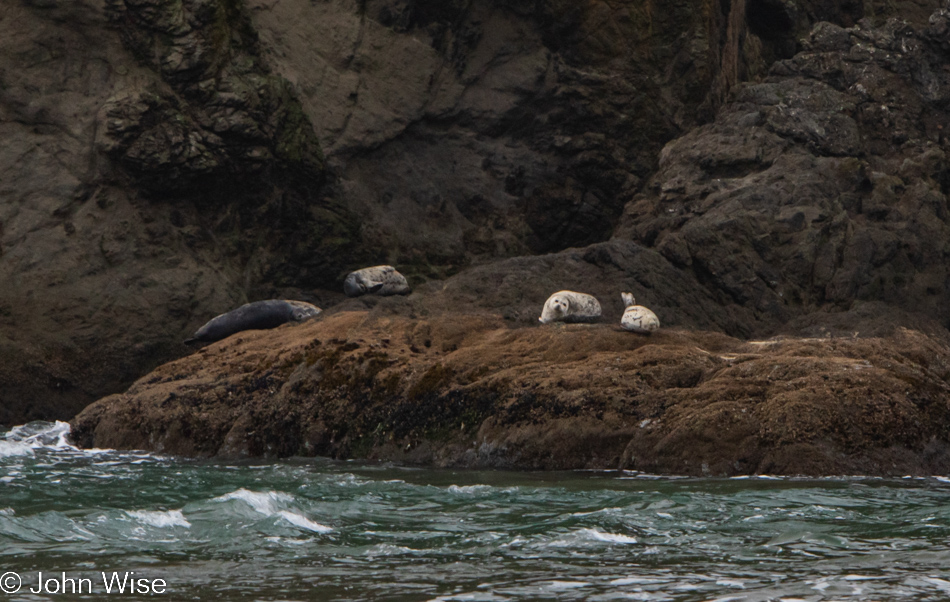
I took more than one photo of these seals, and this was the best of them, which is not saying a lot as they are almost unrecognizable, but they are reminders to Caroline and me that we saw them and maybe for others to gather a hint of what’s to look for while along the coast. I’m pointing this out as one of the other contenders showed a large part of the rocks above them, which to my eye looked incredibly ancient, not as in billions of years, but still quite old. Good old research to the rescue, but also bad for me as there is now ZERO doubt of our return to this area.
There are blueschist knockers out here, and of course, there are chunks of it in the jetty. This stone turns out to be very rare, as in seriously rare. The conditions for its formation are the reason: they must be near a subduction zone, and they can’t go too deep below the surface; otherwise, the pressure and heat will change the minerals into something else. They are typically not old rocks because subduction zones are chaotic places pushing large pieces of earth to and fro. From the Scientific American article I was reading, I learned that it’s easy to find examples of blueschist here in Bandon that were created under 10 kilobar of pressure, meaning these rocks were once 22 to 25 miles (35 to 40 kilometers) below the surface of land we were standing on while here in Oregon. If this means little to you, I’d surmise you have little understanding about time and should get yourself out in the world and question what you are seeing.
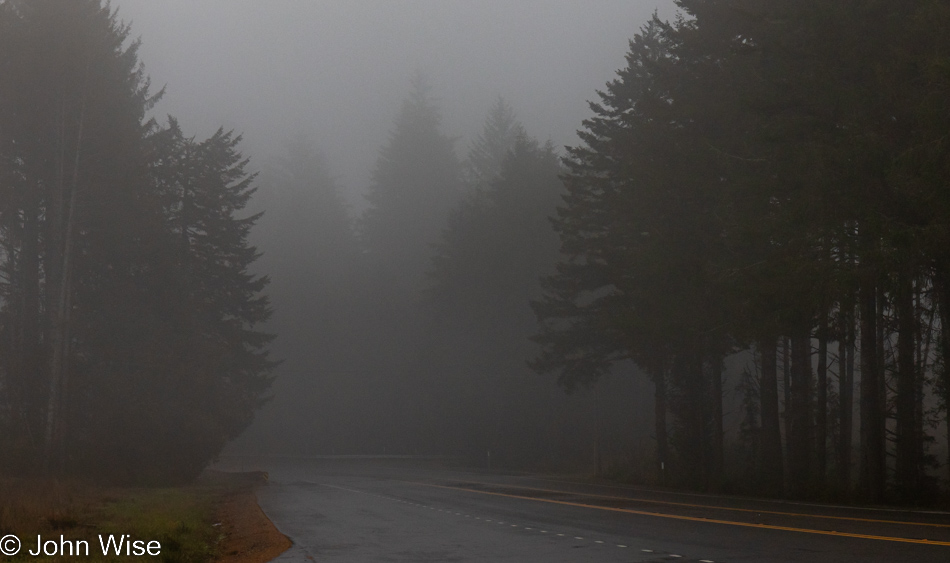
In the fog and mist, we move slowly, not really out of caution regarding the driving conditions but more out of the desire to bring to our senses as much as possible due to our event horizon coming to a close.
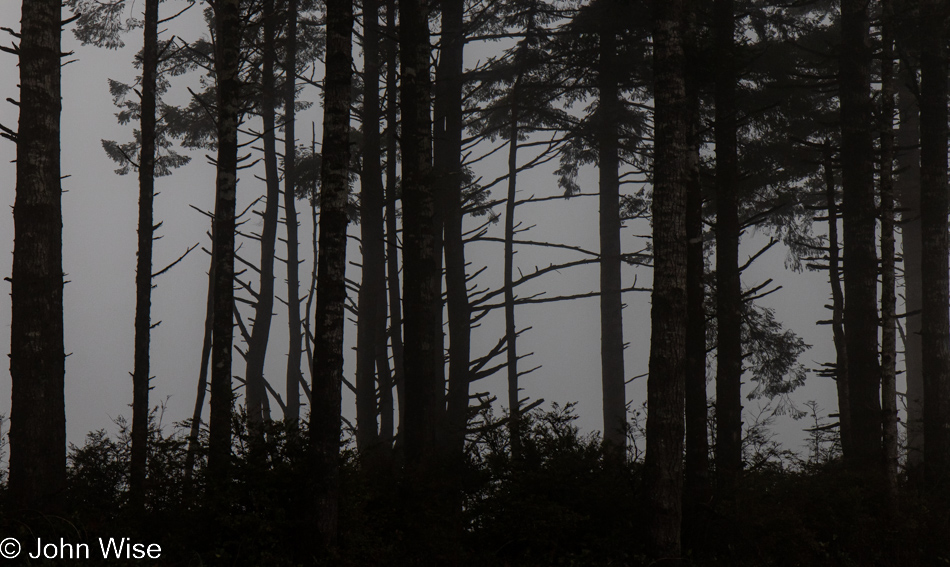
Knowing that last impressions are what we are gathering, we have to look hard at the gray environment for those things that, in years to come, we’ll hold close from our days in Oregon. These perfect examples of yet another wonderful day full of experiences are worth remembering forever.
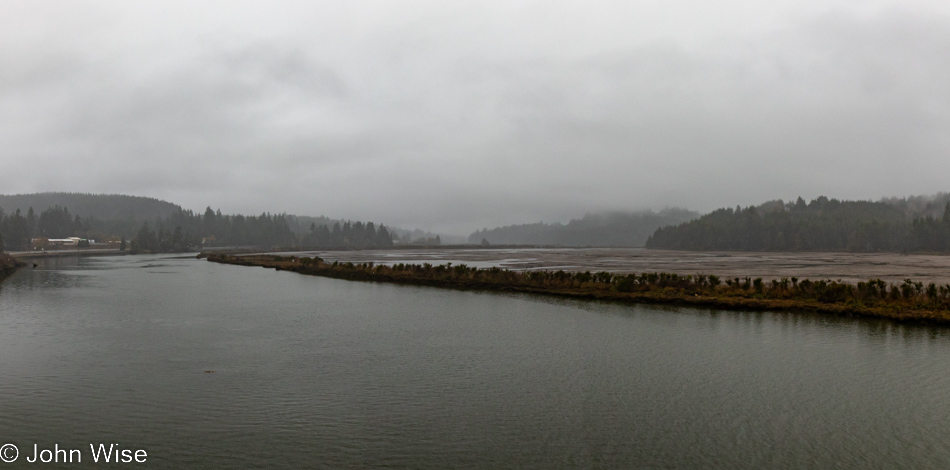
Over the 20 years, we’ve been passing up and down this coast, this corner here at Coos Bay has held a special interest that I’ve always failed to satisfy my curiosity about. It seems apparent that at one time, long before we ever visited, this must have been a major center of the timber industry, and while remnants are still here, I get the sense that it had a much more significant presence here.
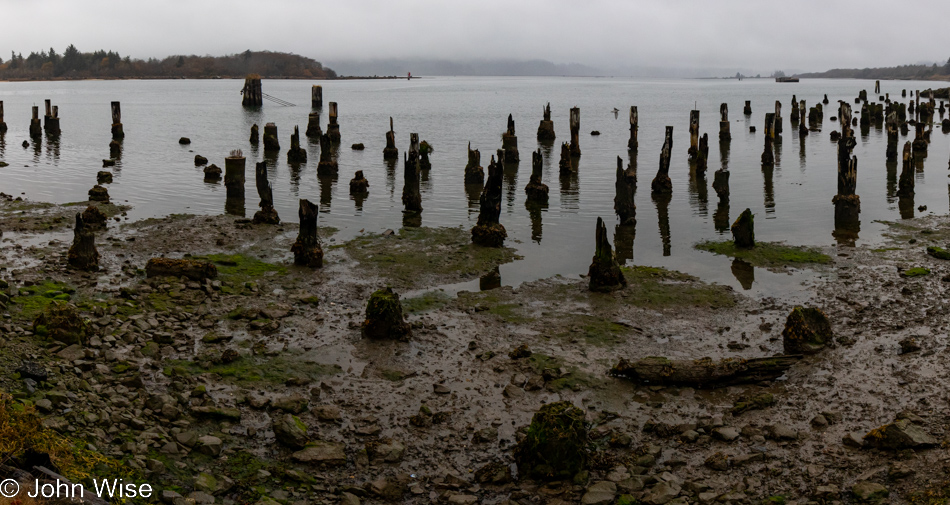
The old adage “be careful what you wish for” needs to be updated for me to “be careful what you research.” Looking for information about the history of logging in the Coos Bay region, the first thing I learned was there are 41,000 acres of old-growth trees still remaining in 1.15 million acres of Coos County. Trees older than 400 years old have been clear cut, and with that, I’ve read enough; this includes a recent 2019 harvest approved by Anthony Davis, a dean of Oregon State University entrusted with lands under their forestry protection program who axed a 16-acre tract of land because they needed the money due to cost overruns regarding a university construction project. Pardon me, but this is bullshit.
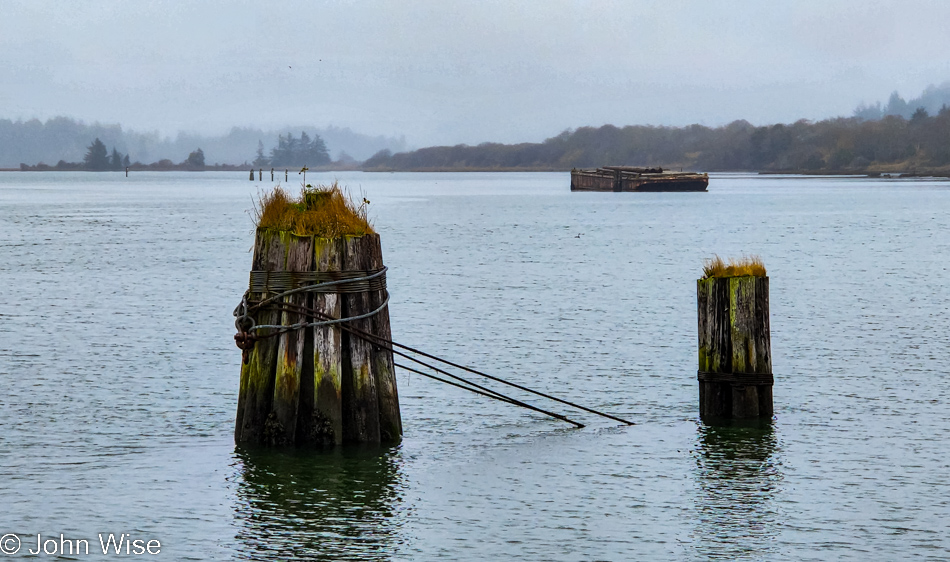
While I’m out in this beautiful place, I only want to enjoy the solemnity of it all. Now, back in Arizona and knowing that our form of capitalism will only continue to exploit everything that can make money, my wish is for either a meteorite to splash down in the Pacific and wash humanity from the surface of our planet or maybe even for a certain Russian megalomaniac to let the nukes fly so our planet can get to the business of repairing the profoundly ugly damage we perpetuate on these lands, waters, and atmosphere on a daily basis.

The presence of humans over the course of history has left impressions for centuries into the future; things like cave paintings, old middens, burial sites, certain buildings, and even some artifacts have been found. Today, though, we consume and throw away everything we touch as though some omnipotent god could wave a hand and repair the horror we are leaving in our wake. While I can pause and appreciate the aesthetic of a rusting nail from a disused dock, I’m also reminded of how little we care about what’s left behind as long as we got ours.
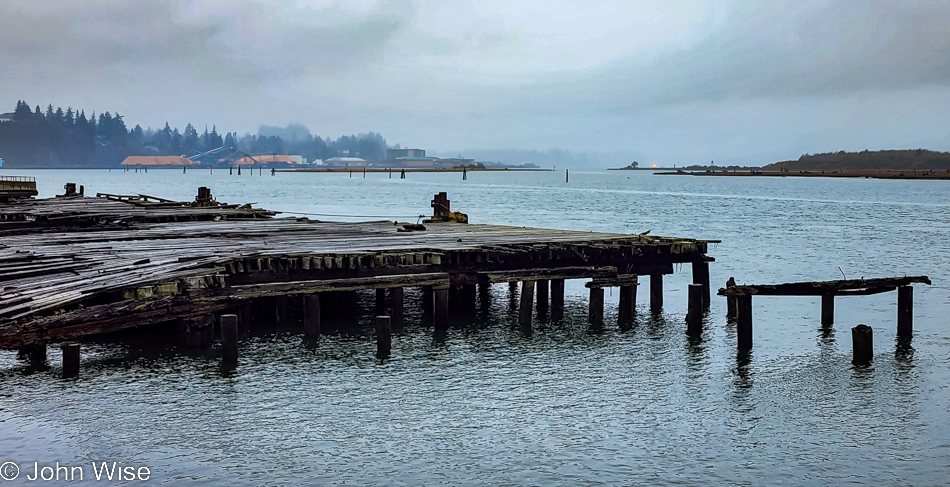
But if I don’t leave this track of destruction and neglect behind me, I’ll be ending this series of blog posts on a negative note, and that’s not really where I want to go.

So, let’s return to the intense pockets of beauty that still exist out here and share those impressions. From here I can hope that others might stumble upon these posts, not only to see what had been but to inspire them to visit and see for themselves an environment cared for and protected where not everything need be fouled for the sake of exploitation.
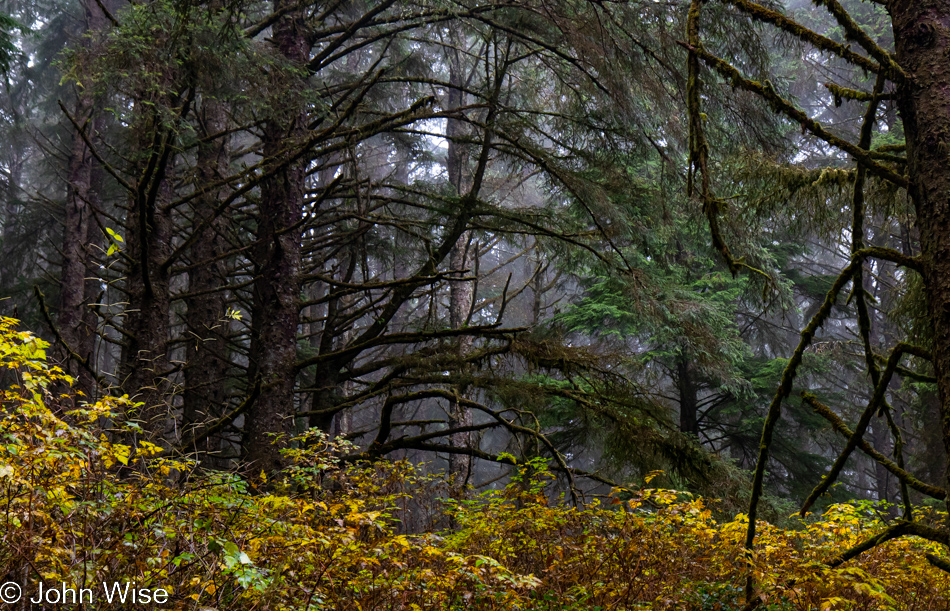
Certainly, this forest view is one of wonderment, but you might notice there are no old trees here. Maybe others in the centuries to come will be afforded the opportunity to see this place still filled with the trees that were standing here back in 2022.

Maybe instead of telling people passing through that they are entering and leaving tsunami hazard zones, we should have signs in life that we are entering an exploitation-free zone where nature is being allowed to present itself in the rawest format without anything more from humans than pathways through and maybe accommodations that leave no impact.
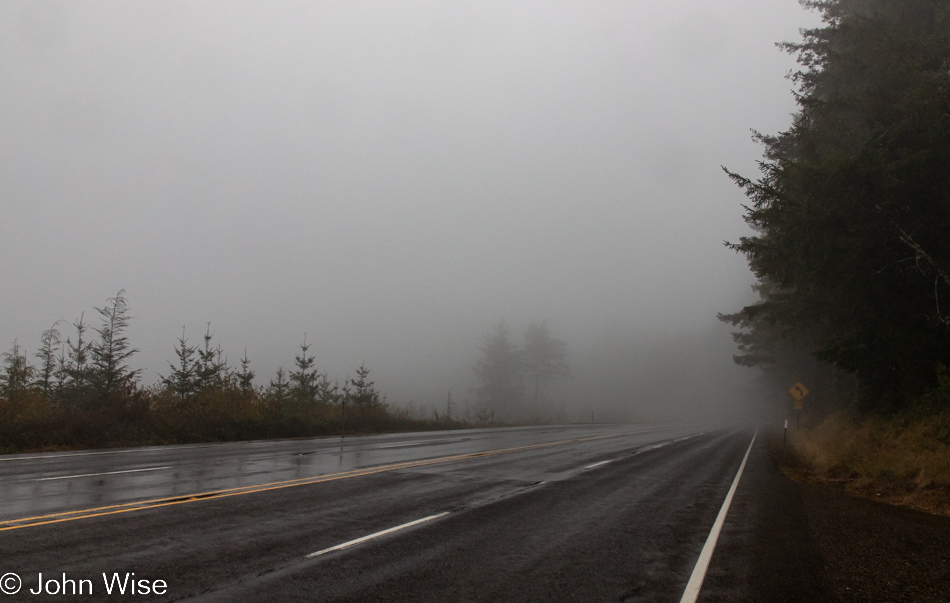
It’s not lost on me that, in effect, we modern humans are not as “modern“ as we might pretend and are instead half-stupid creatures stumbling through the fog of our own arrogance.
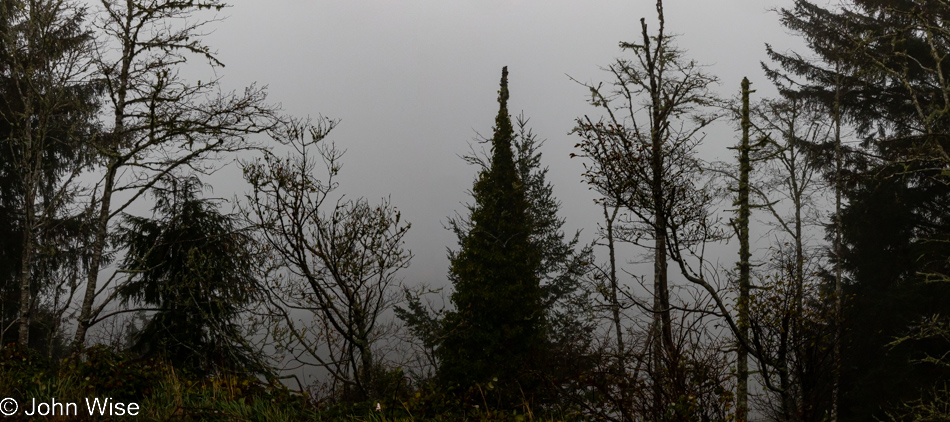
It’s with great sadness that we inch ever closer to the exit.
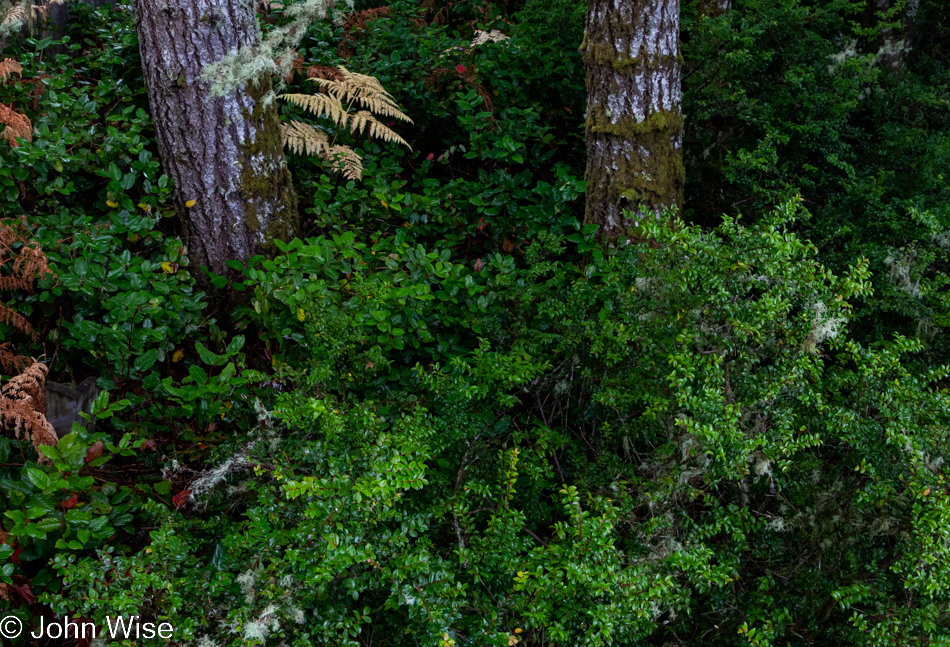
Then again, maybe, just maybe, there’s enough time for us to capture one other new place we’ve never visited before that is to be found right here at the Oregon Dunes Overlook in Gardiner.

Is it the melancholy of distance that stimulates ideas not realized while I was at a place where I should have tried pulling back from the abyss of being overwhelmed to gather yet a different perspective? In this instance, I wish to see the forest from the level of a newt, between mushrooms, while walking across the moss and sand.
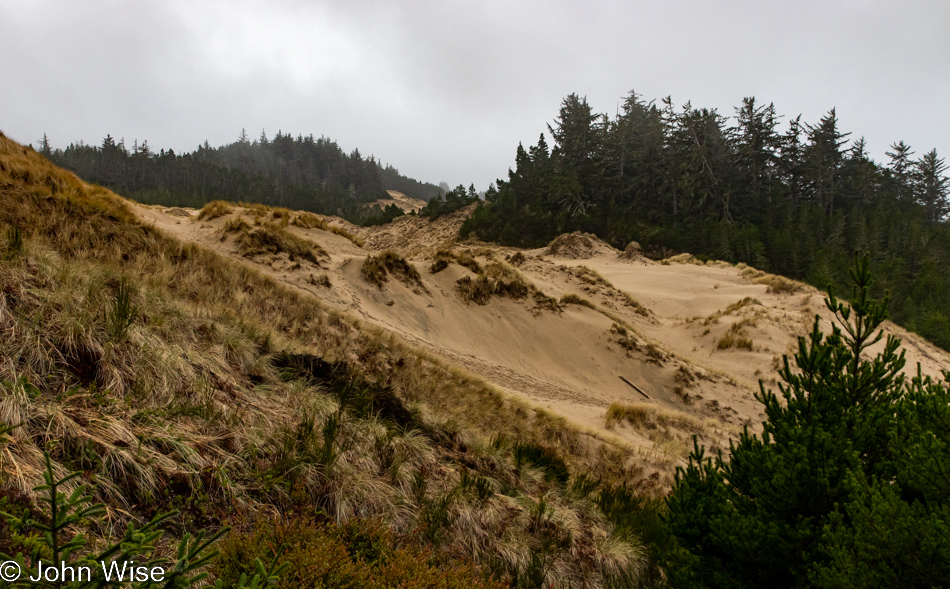
As I said, we are here in the sand dunes, among mountains of sand.
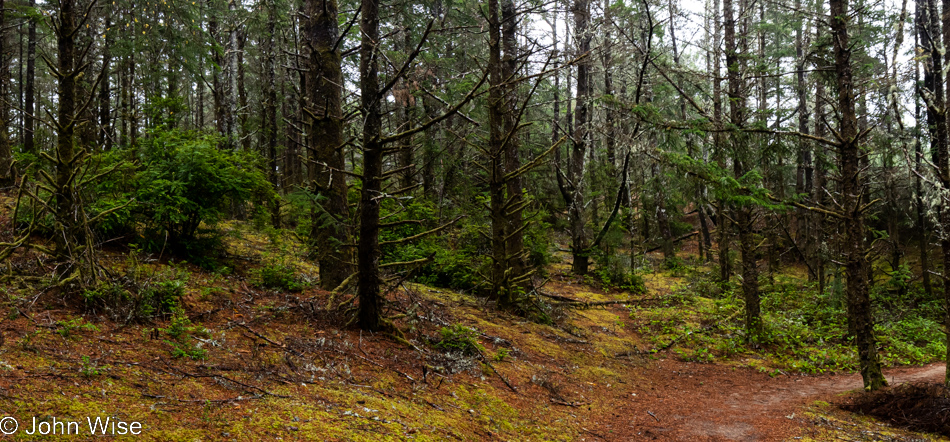
With a lush forest growing on top of it in spots.
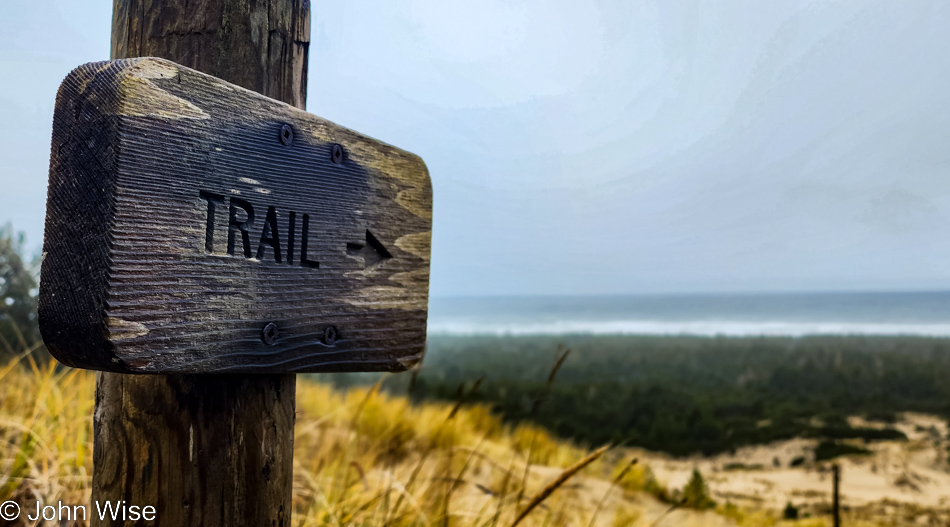
While the trail could have taken us to the ocean (you can see the sign points right to it), we are limited regarding goof-off time. Being mindful of that factor, we reluctantly return to the car.
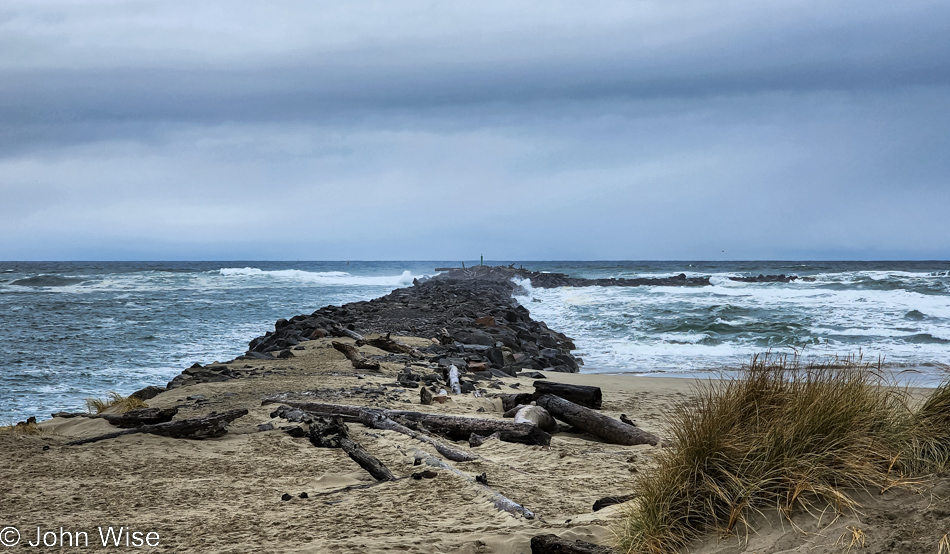
And then, before we know it, we are back in Florence, where our encounter with the coast began ten days ago. By this time at the North Jetty, we’ve already lunched up at the Little Brown Hen, where, for the second time, we shared a warm bowl of the best brown rice pudding you’ll find on the entire coast of this state. The need to walk off that indulgence is part of what brought us out here.
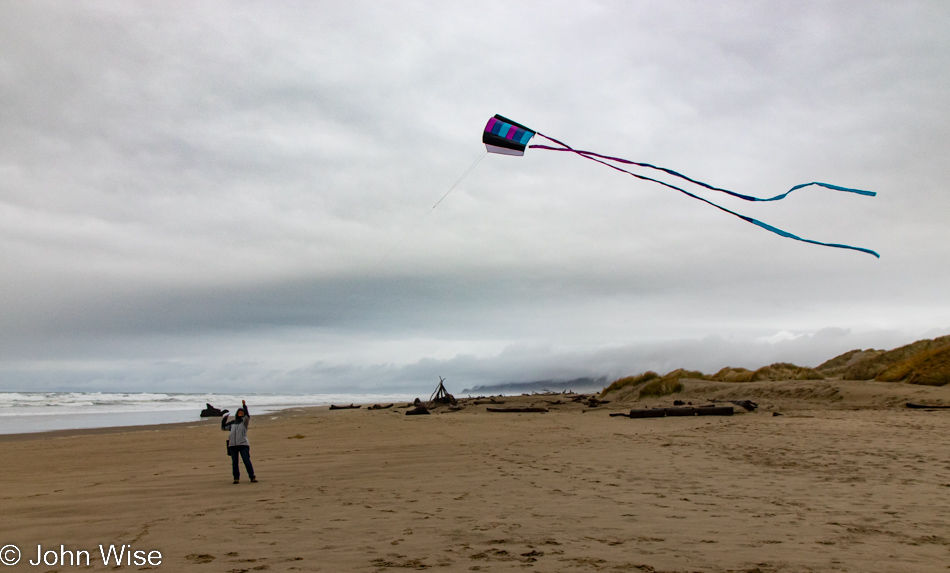
That, and Caroline’s need to bring out Happy McKiteface for a final flight in the cool coastal air we’ll soon be missing.

If I can’t take a multi-hundred-pound souvenir with me today, I can bring a reminder.
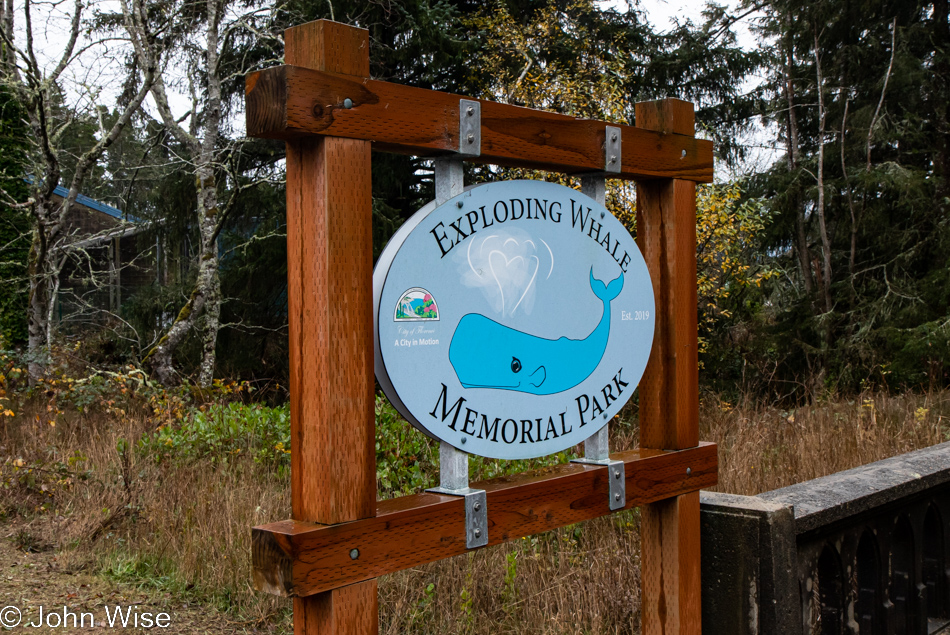
Speaking of reminders, who doesn’t want to be reminded of that day 52 years ago when too much dynamite was used to remove a whale carcass from a nearby beach but instead blew car-crushing, possibly life-extinguishing chunks of rotting whale in all directions?
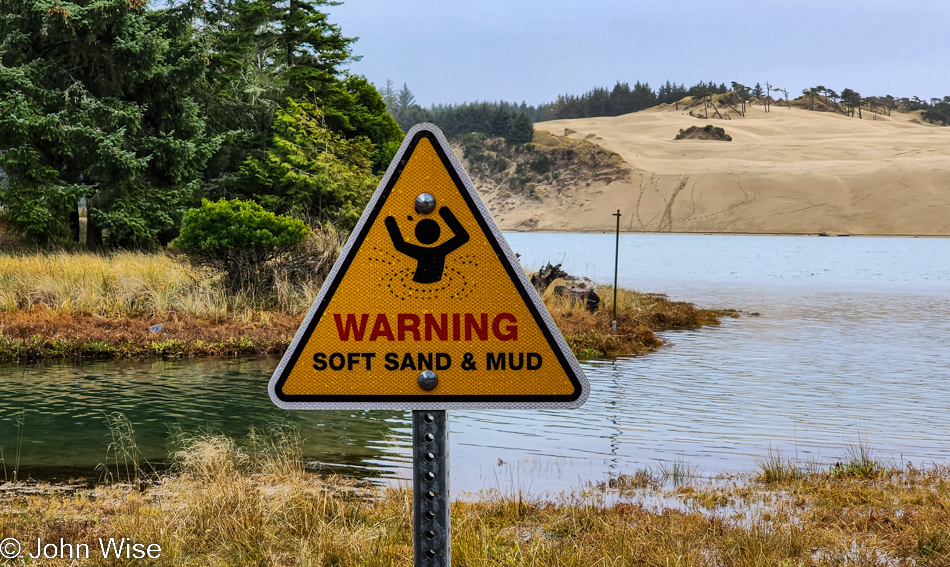
This warning sign at the Exploding Whale Memorial site regarding soft sand and mud should include some text that the incident did NOT happen here but somewhere on the other side of that dune. I didn’t want to visit some random place for a moment of remembrance; I wanted to stand on ground zero where said whale failed to vaporize and instead was sent off to chunkidom.
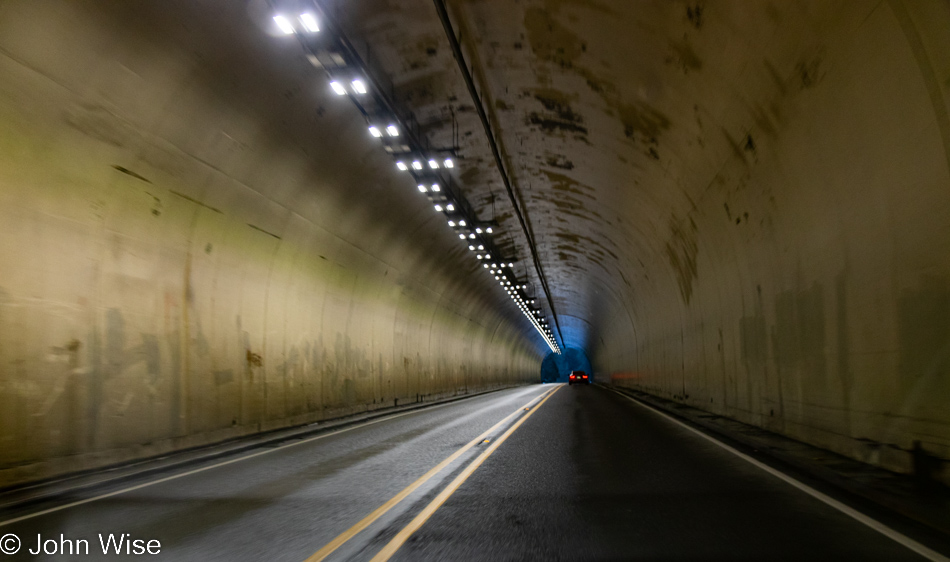
With a bunk memorial site behind us and Dutch Bros. coffee along for the ride to Eugene, we have now left the tsunami zone.
